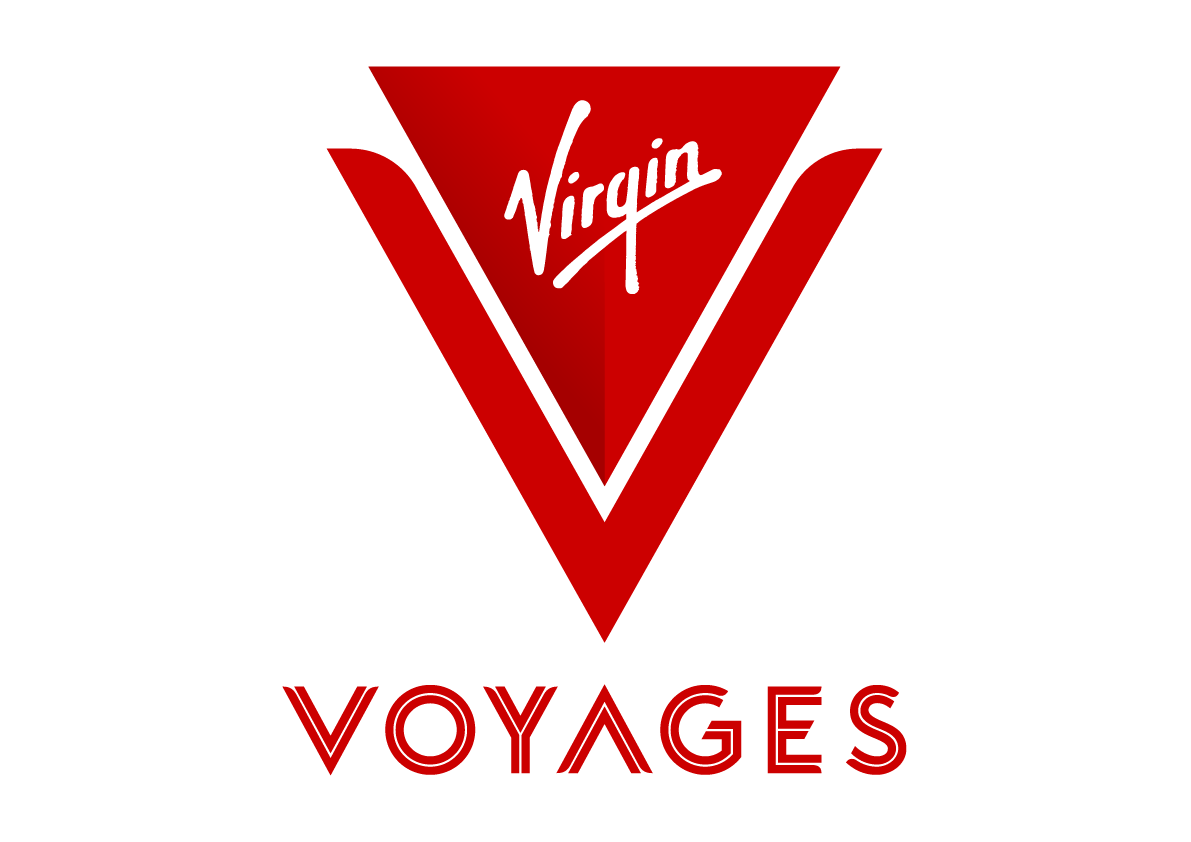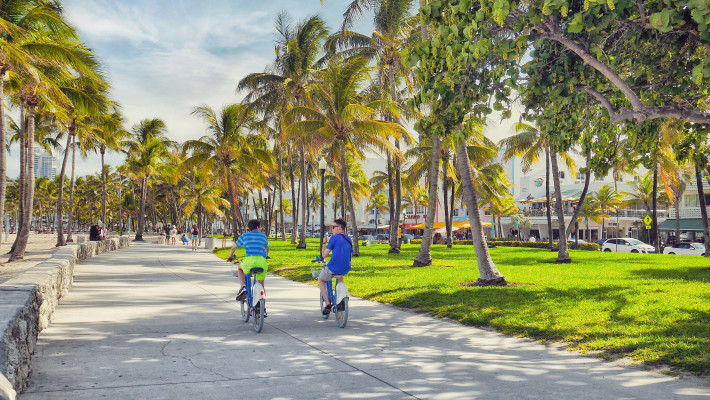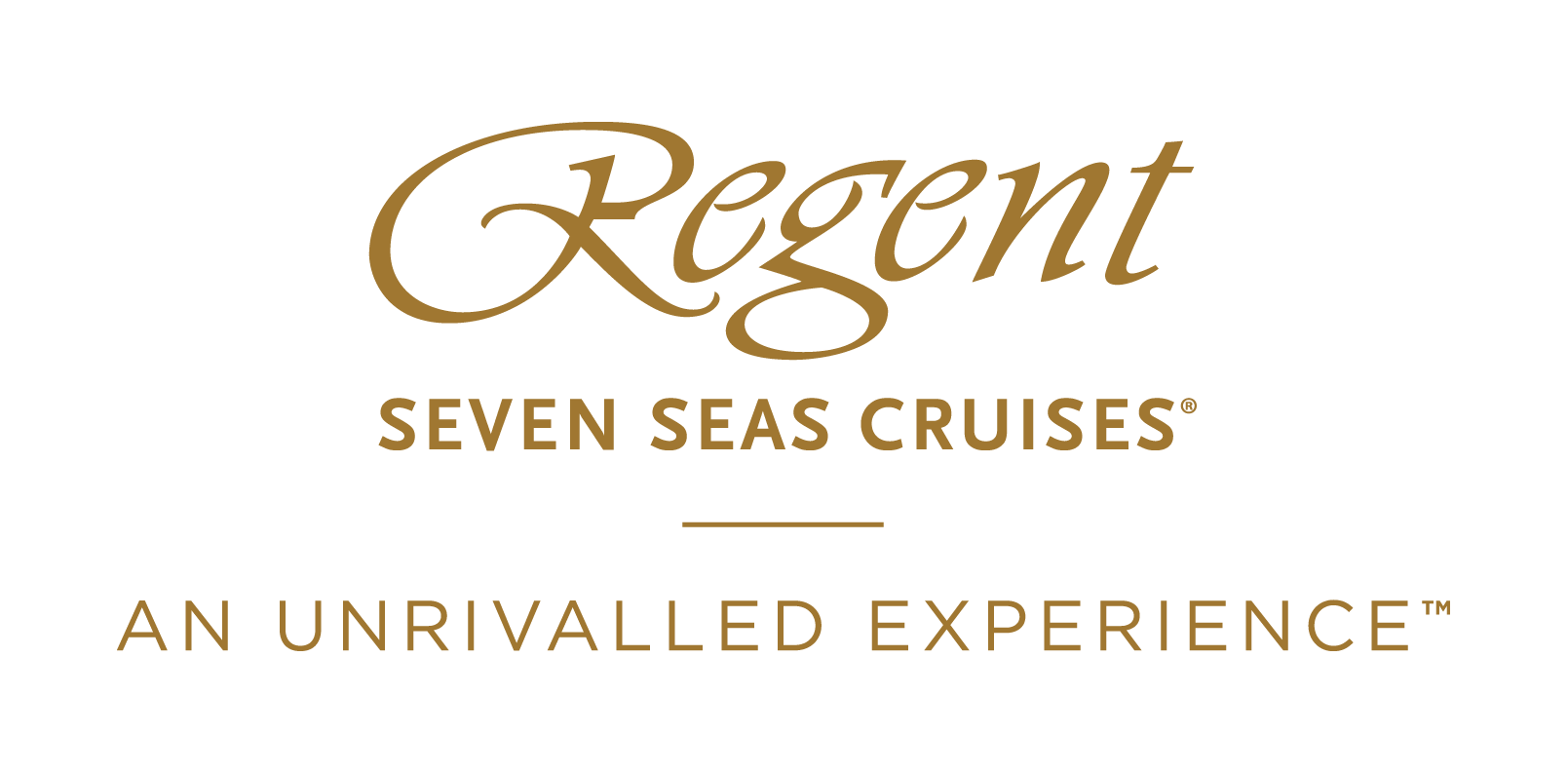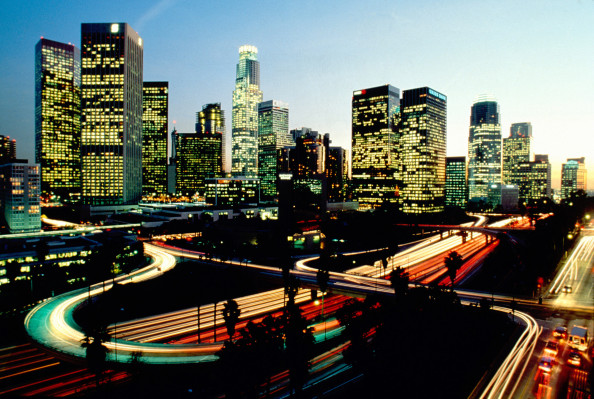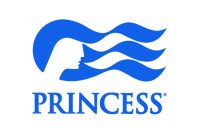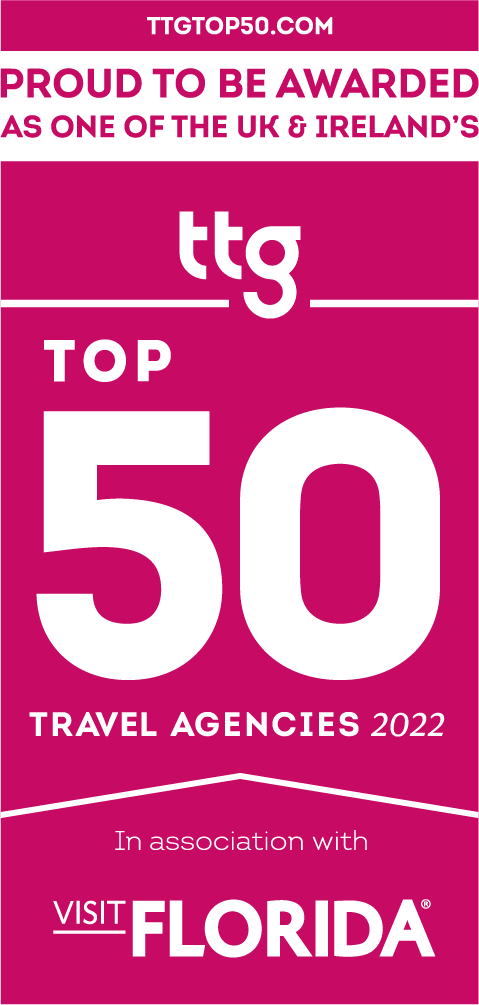Central America Cruise
Central America is made up of seven countries - Belize, Guatemala, El Salvador, Honduras, Nicaragua, Costa Rica and Panama. Cruises to Central America often include ports of call in Mexico and South America as well.
You'll find a wealth of experiences to enjoy with a cruise to Central America, and a variety of different cruise lines offering exciting itineraries showcasing the best of this diverse region. Here at Cruise118, we have a team of expert Cruise Concierge who can help you with every aspect of planning and booking your exotic cruise holiday. Please don't hesitate to give us a call with your cruise questions.
Related Countries
Cozumel

Cozumel
Measuring 33 miles long and 9 miles wide, this little island offers big rewards. Known for it’s stunning natural beauty, glass-clear aquamarine seas, and vast marine life, Cozumel will always be a popular cruise ship port of call and firm favourite amongst scuba divers – owing to it’s multiple diving spots across 600 miles of coral reef.
Venture off the beaten path to find deserted, windswept beaches and wild, vibrant natural parks, or head directly across from the docks to Plaza Central, the heart of San Miguel - Residents often congregate here in the evening, especially on weekends, when free concerts begin at 8pm.
Most of the island's restaurants, hotels, stores, and dive shops are concentrated downtown and along the two hotel zones that fan out along the leeward coast to the north and south of San Miguel.
Things To See, Do & Taste In Cozumel:
- See: Mayan Ruins of Tulum - One of the most visited archaeological sites in Mexico. Sat on a seaside cliff alongside turquoise waters.
- Do: All Terrain Xrail Expedition – A journey into the heart of Cozumel's jungle.
- Taste: Cochinita Pibil - Slow roasted pork usually served with pickled onions on tacos or tortas (also known as Torta de Cochinita Pibil or Taco de Cochinita Pibil).
Costa Maya
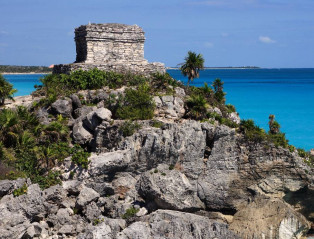
Costa Maya

Costa Maya is the gateway to the Mayan ruins of Mexico.
The specifically created port of Costa Maya is a destination in itself, with multiple restaurants, bars, swimming pools, water sports, shops and market stalls where visitors can buy local crafts from. There is even the Lost Mayan Kingdom Water Park, just a few minutes' walk from the ship.
To see the real lost Mayan kingdom, take a tour out to see the temples and pyramids of Chacchoben in the jungle, just 45 minutes' drive from the port. The pyramids were lost to the world until they were rediscovered in 1931, so are very well preserved and a fantastic way to learn about the ancient Mayan civilisation.
Things To See, Do & Taste In Costa Maya:
- See: Mayan Ruins.
- Do: Scuba Dive the Mesoamerican Barrier Reef - One of the World’s best scuba dive sites and the largest reef system in the Western Hemisphere.
- Taste: Enchiladas – Dating back to the Mayans, Enchiladas consist of a corn tortilla rolled around meat, cheese, beans, potatoes, and/or vegetables and covered with a savoury sauce.
Ensenada
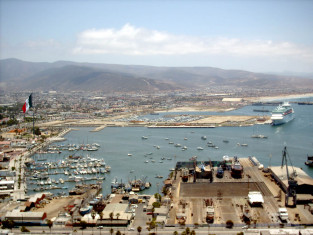
Ensenada
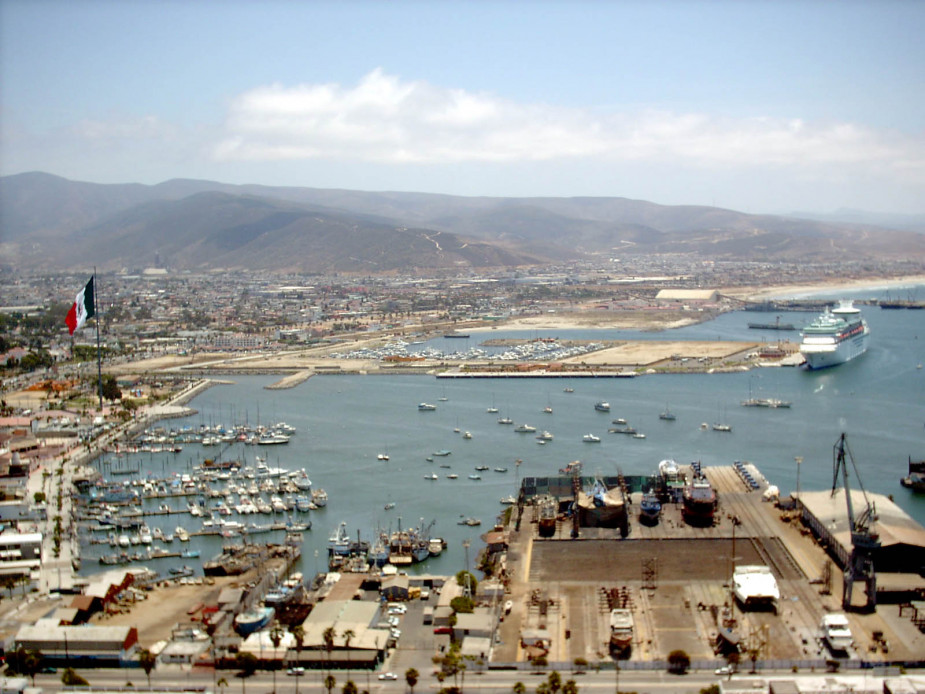
Cabo San Lucas
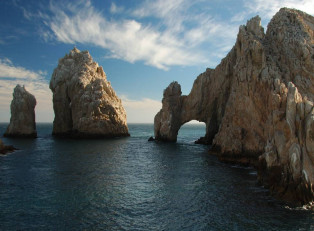
Cabo San Lucas
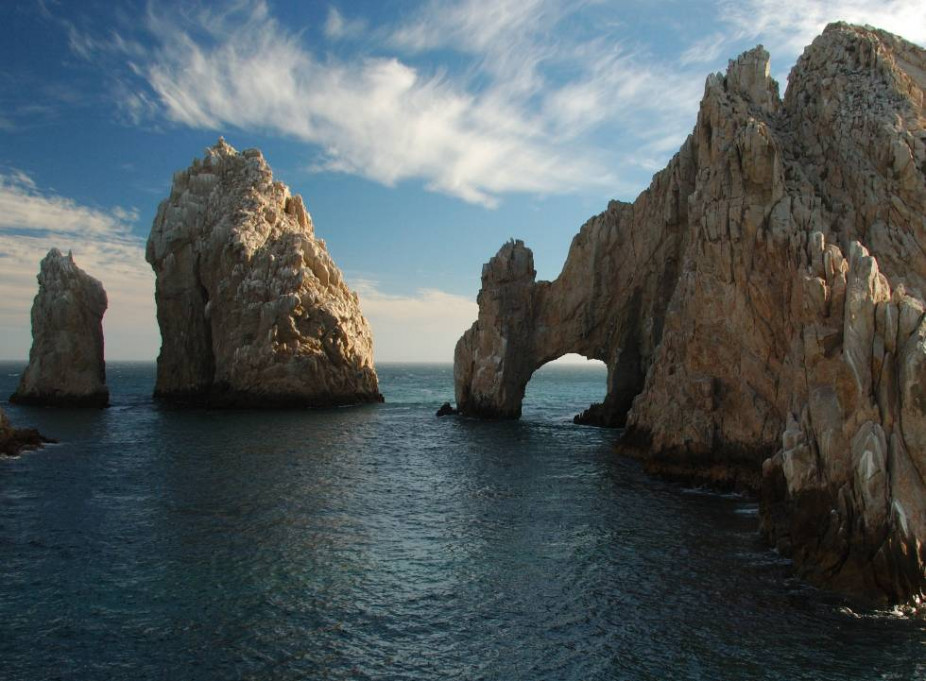
Cabo San Lucas is a popular resort town in Baja California Sur in Mexico.
It offers a lot for visitors with great beaches, lots of varied marine life and stunning natural scenery nearby.
Nearby attrations reachable by boat are the romantic Lover's Beach and the arch of Cabo San Lucas.
Many local restaurants with delicious Mexican food are available around the port, which is easily walkable from the tender stop.
Puerto Vallarta
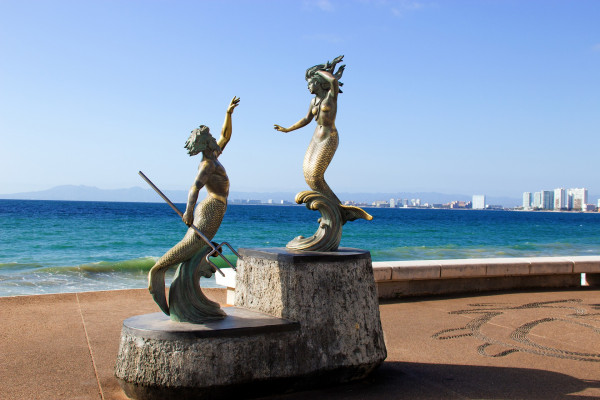
Puerto Vallarta
Puerto Vallarta is a popular and busy resort city in Mexico that lies nestled between the Sierra Madre mountains and a long beach shore on the Pacific Ocean.
It has modern hotel complexes, a stunning long white sandy beach, bustling malecon (boardwalk) and interesting Old Town, which has intricate old churches, squares and fascinating architecture.
It is perfect for adventure seekers, with many activities around the area, plus watersports, luxury and pampering in the resorts and spas, and delicious Mexican cuisine in the multitude of cosy local tavernas.
Progreso
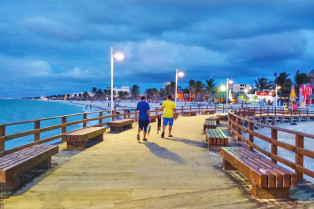
Progreso

Mazatlán

Mazatlán
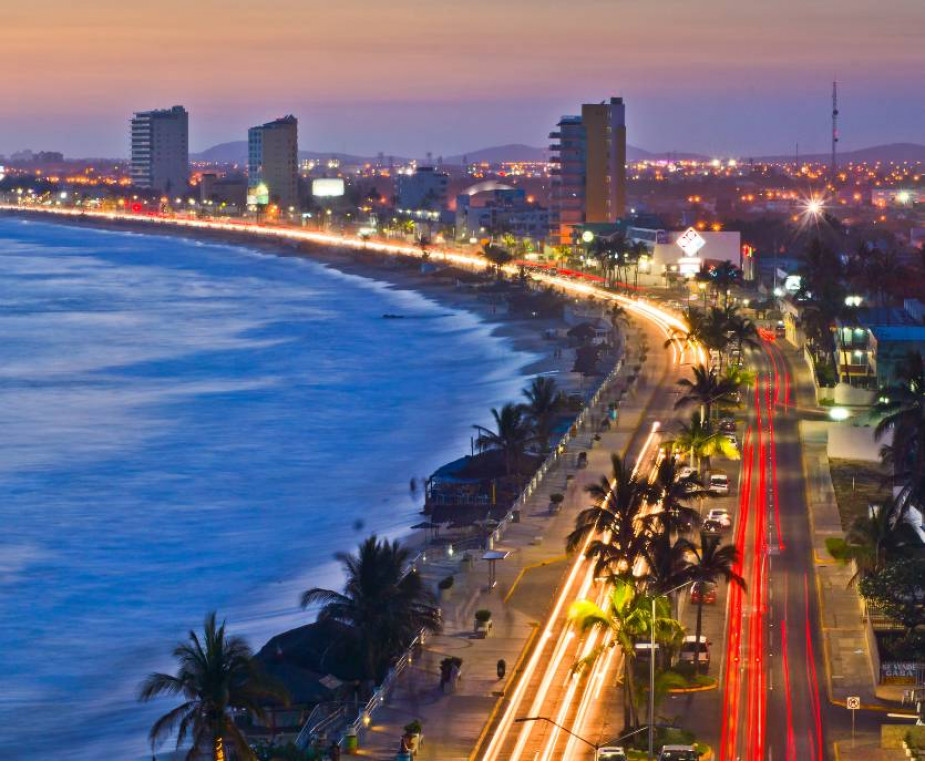
Mazatlán is known as the 'pearl of the Pacific', as it offers the attractions of wonderful weather, reasonable costs in port, in a gorgeous location.
This rare colonial Mexican town on the coast, has miles of white powder sand beaches, fascintating cultural events year-round and wonderful seafood. Shrimp and lobster are a speciality and recommended to sample ashore for shellfish fans.
Huatulco (Santa María Huatulco)
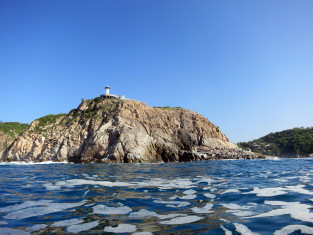
Huatulco (Santa María Huatulco)
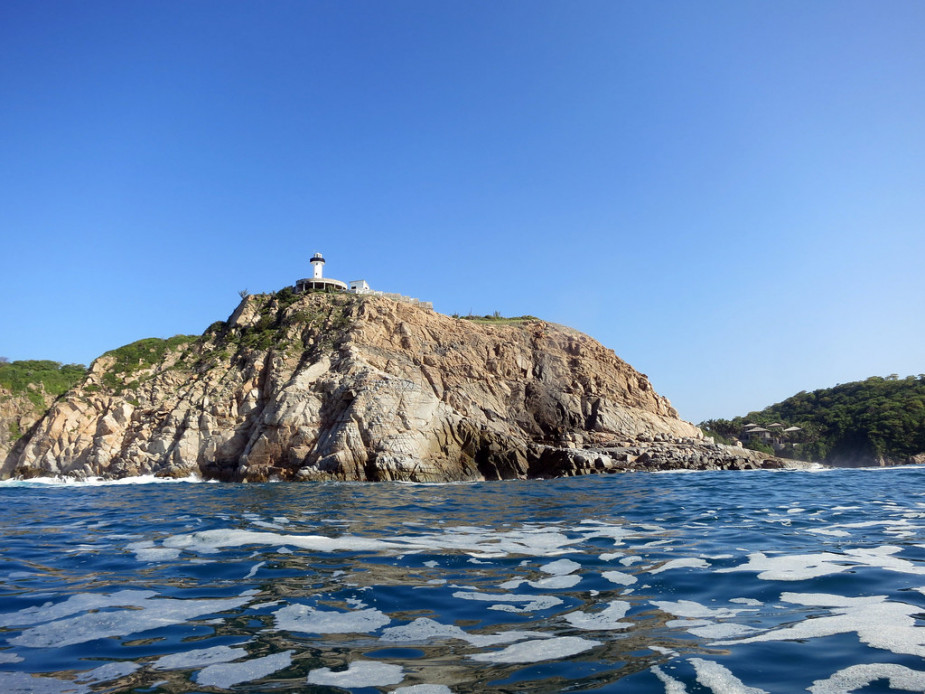
Acapulco
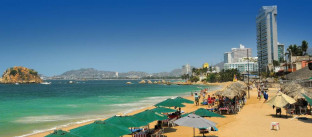
Acapulco
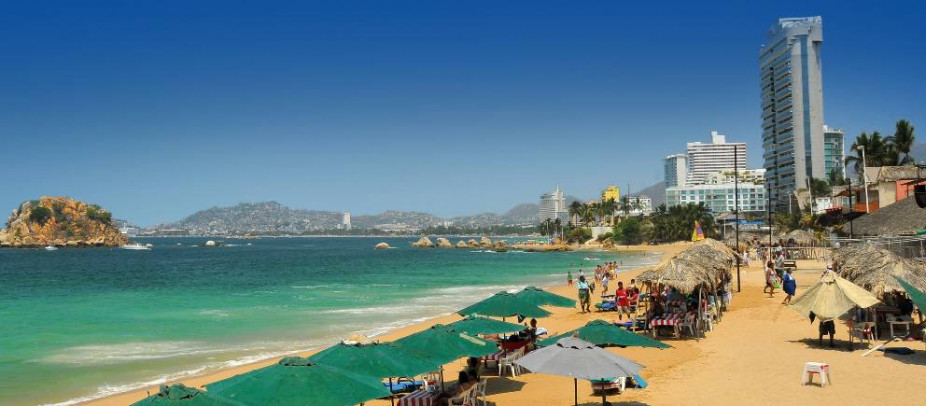
Puerto Chiapas
Puerto Chiapas
La Paz

La Paz
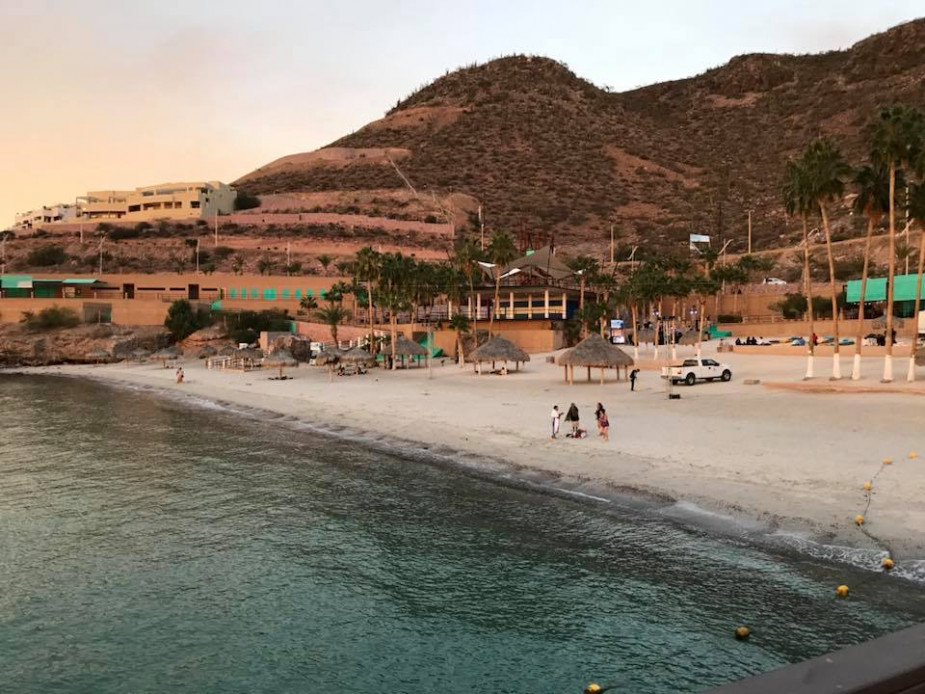
Manzanillo, Mexico
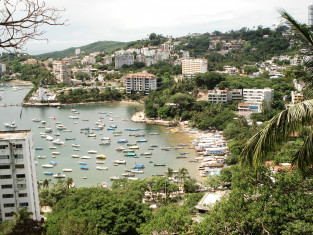
Manzanillo, Mexico
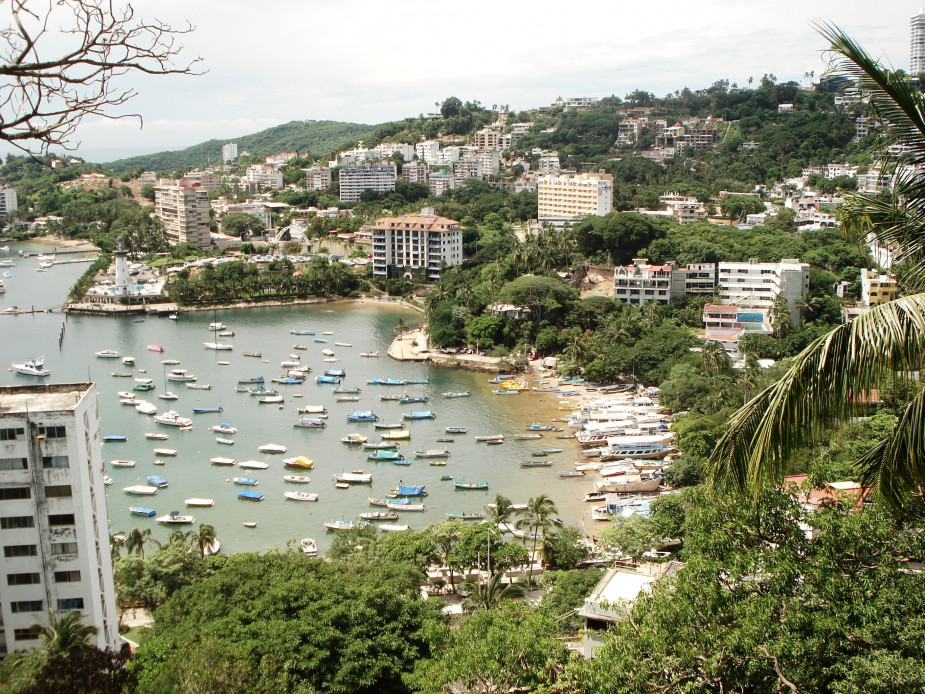
Puerto Quetzal
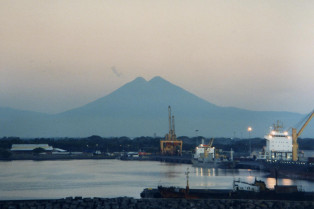
Puerto Quetzal
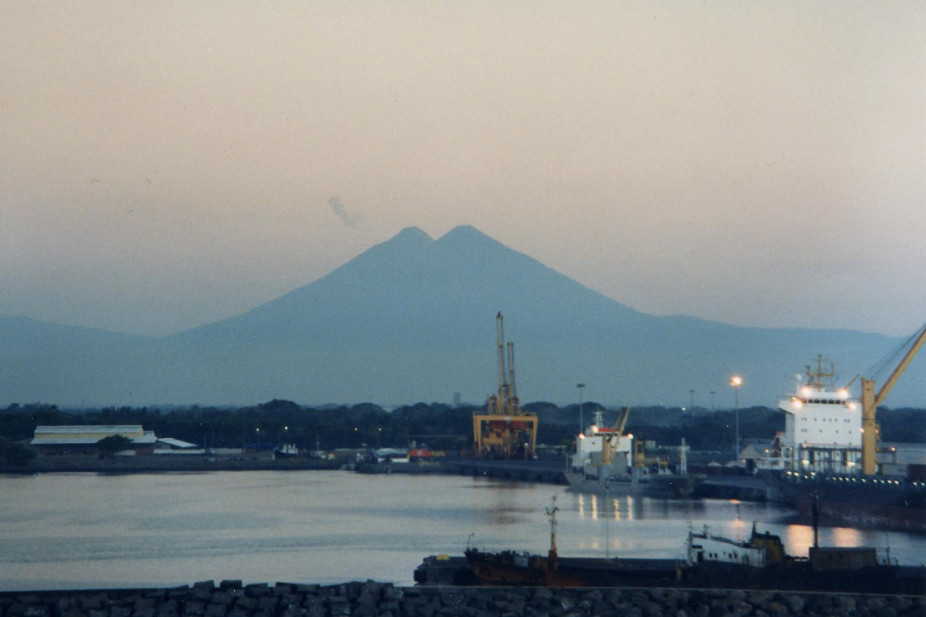
Santo Tomás de Castilla
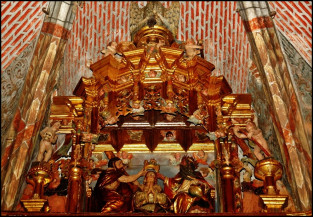
Santo Tomás de Castilla
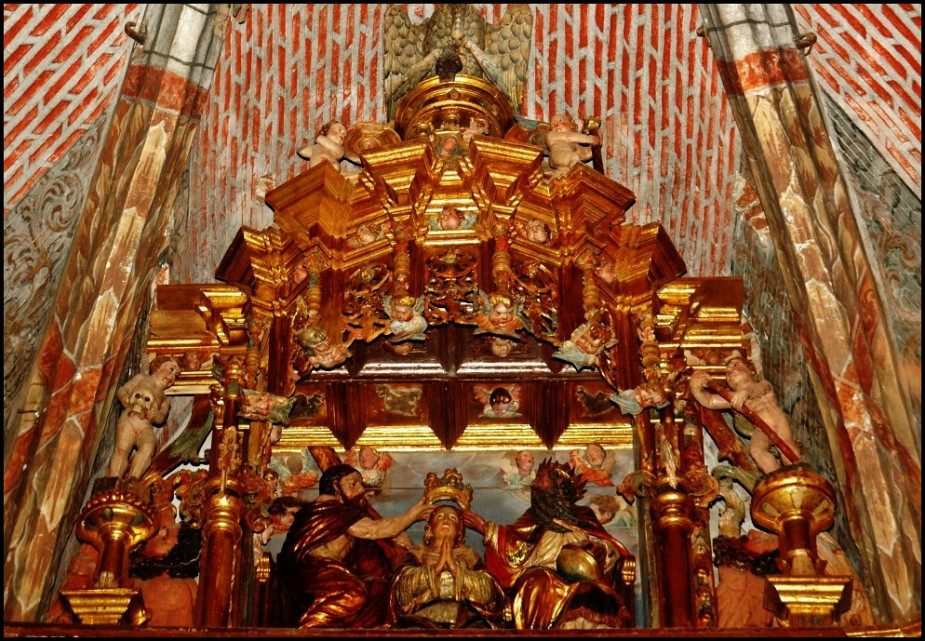
Lívingston
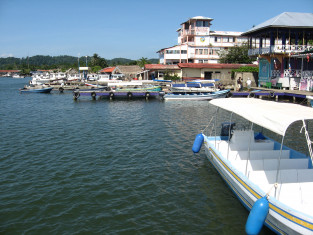
Lívingston

Roatán Island
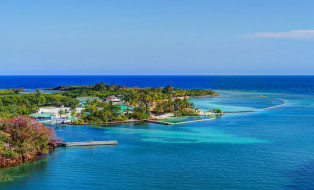
Roatán Island
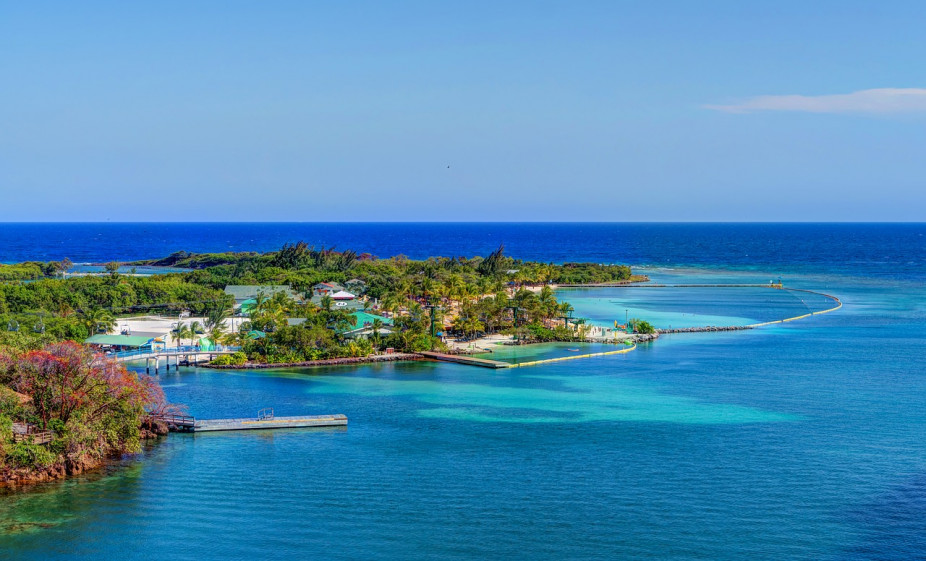
Trujillo
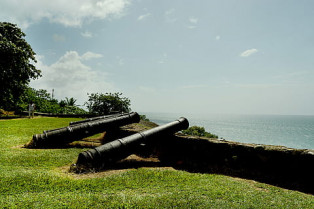
Trujillo

Water Caye, Isla Utila
Water Caye, Isla Utila
Útila Island
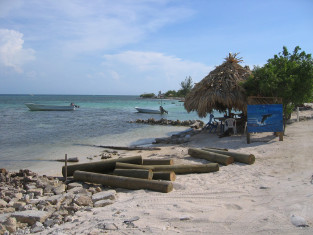
Útila Island

Amapala
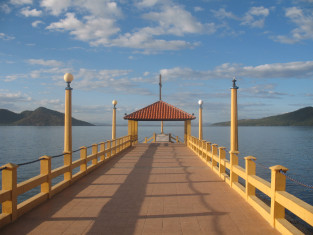
Amapala

Mahogany Bay, Roatan
Mahogany Bay, Roatan
Coxen Hole, Roatan
Coxen Hole, Roatan
Cochinos Cays
-custom_thumb.jpg)
Cochinos Cays
-custom_small_banner.jpg)
San Juan del Sur
-custom_thumb.jpg)
San Juan del Sur
-custom_small_banner.jpg)
Corinto
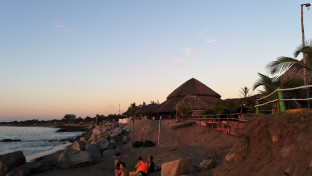
Corinto
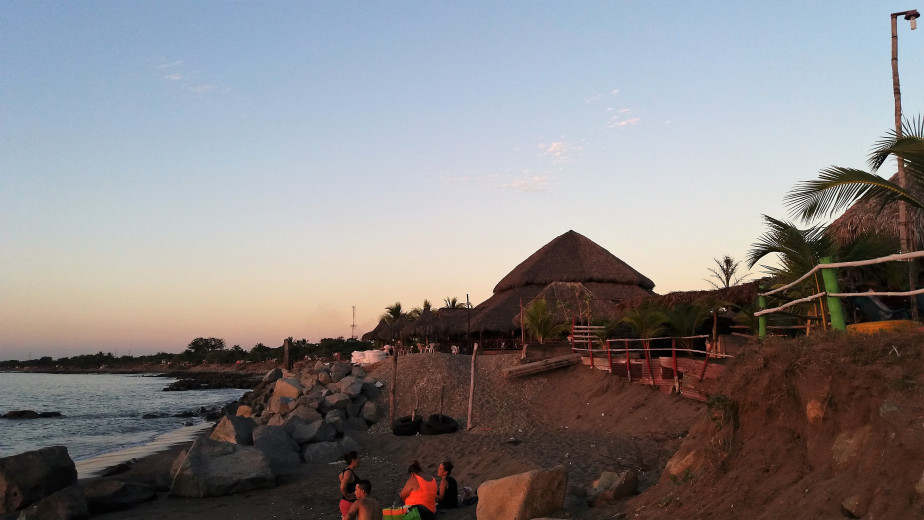
Corn Island
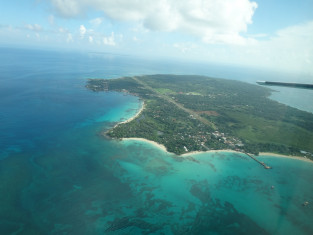
Corn Island

Acajutla
-custom_thumb.jpg)
Acajutla
-custom_small_banner.jpg)
La Union
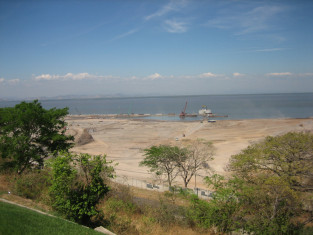
La Union

Puerto Limón
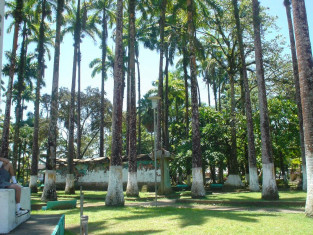
Puerto Limón
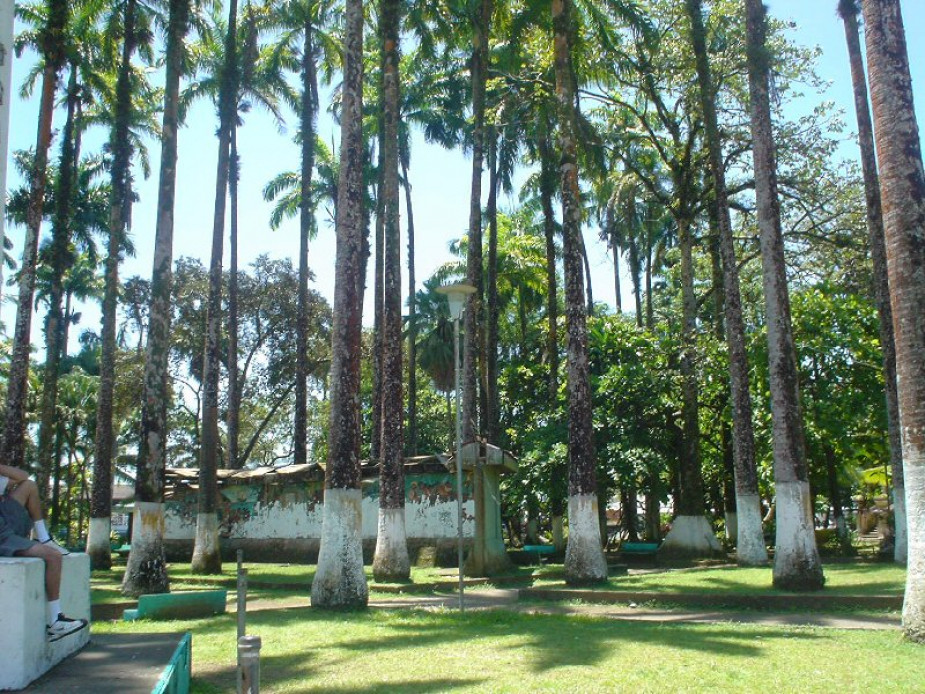
Puntarenas
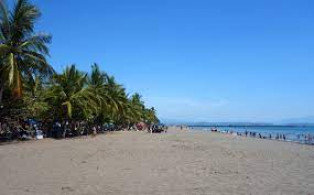
Puntarenas
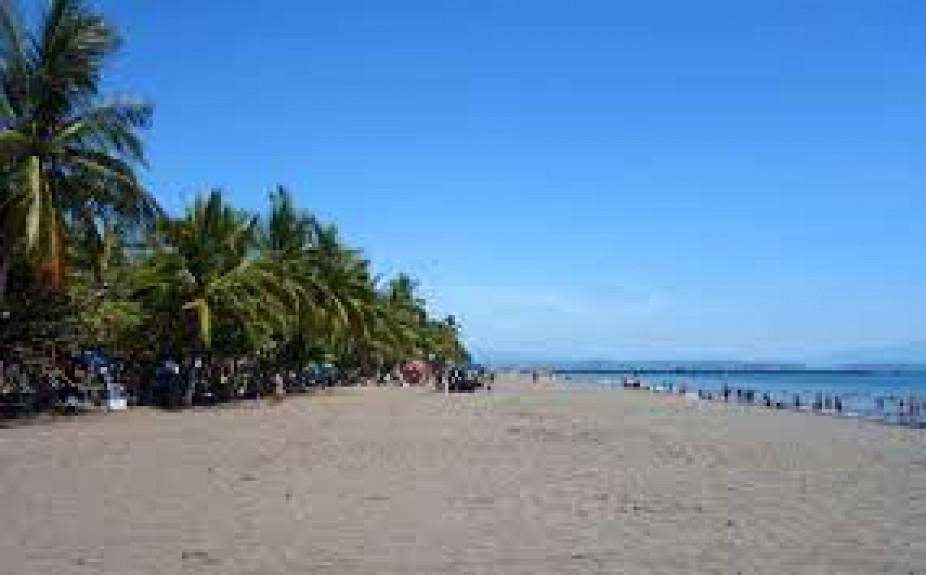
Puerto Caldera
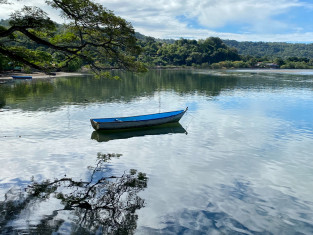
Puerto Caldera
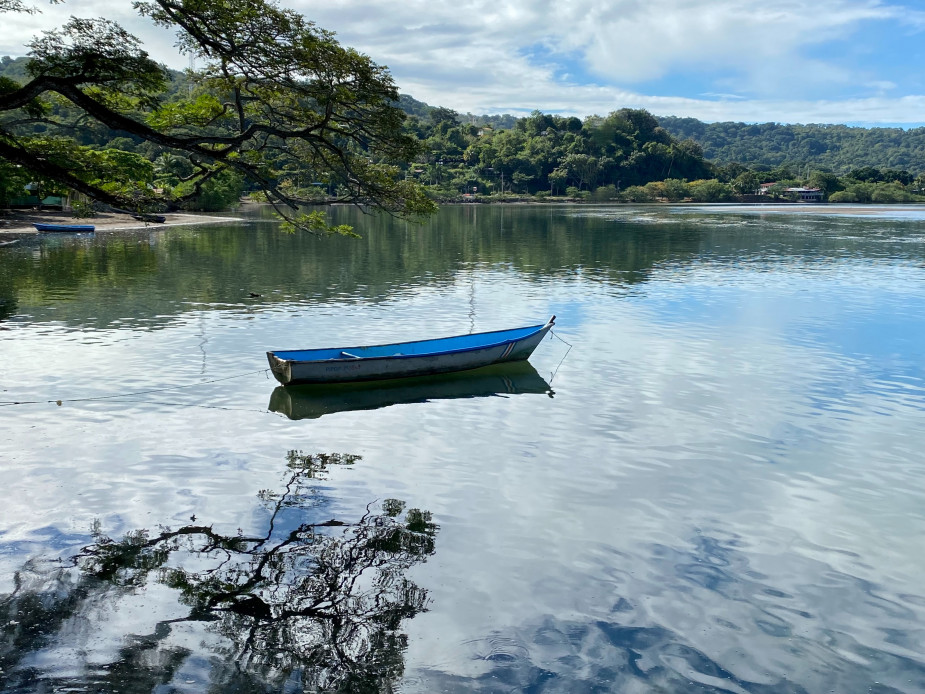
Quepos (Puerto Quepos)
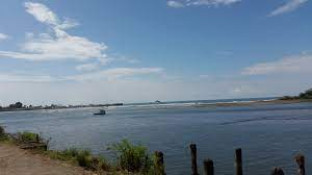
Quepos (Puerto Quepos)
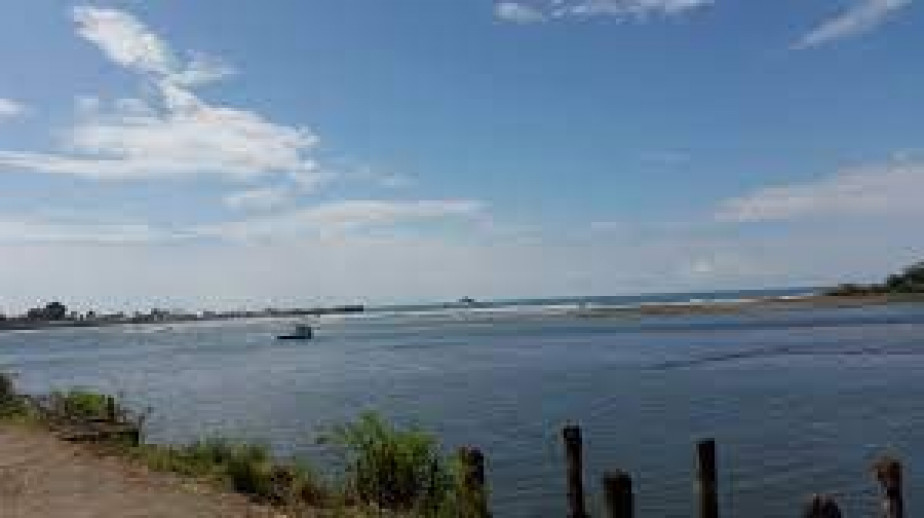
Puerto Jimenez, Costa Rica
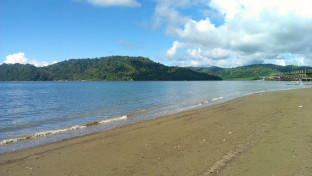
Puerto Jimenez, Costa Rica

Golfito

Golfito
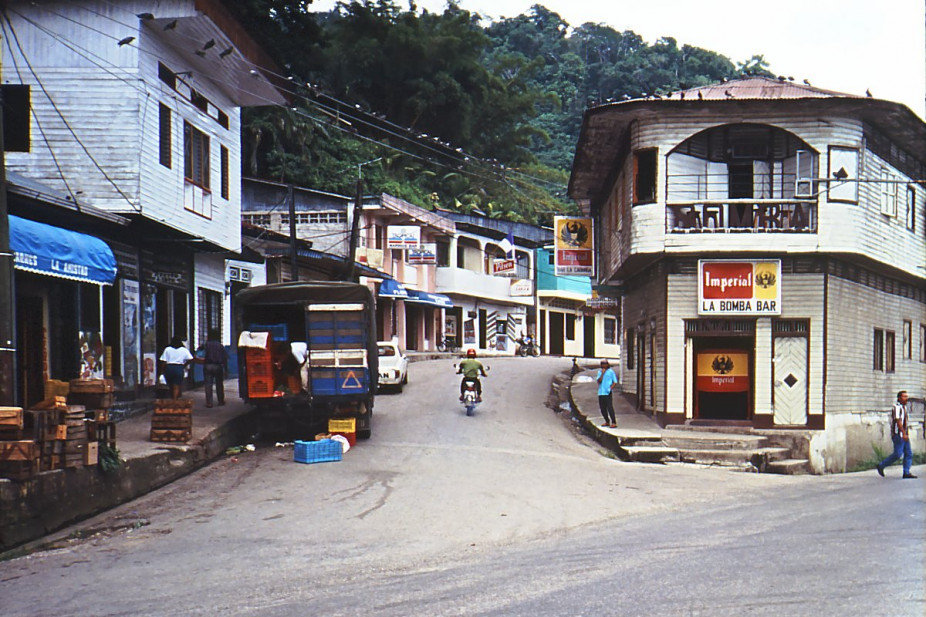
Culebra Bay
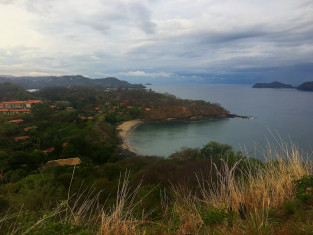
Culebra Bay

Curú Wildlife Refuge
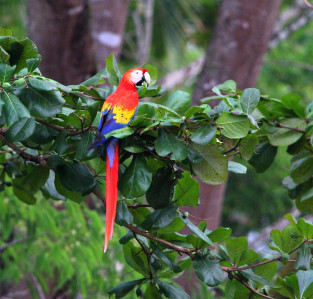
Curú Wildlife Refuge
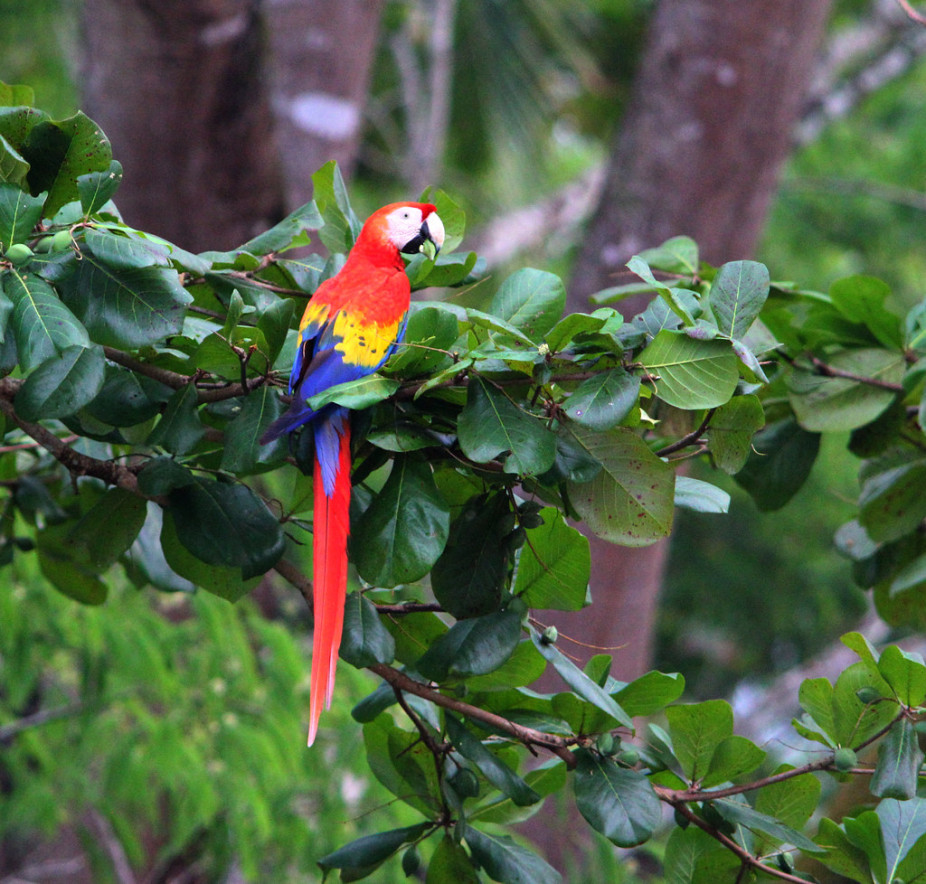
Playa Herradura
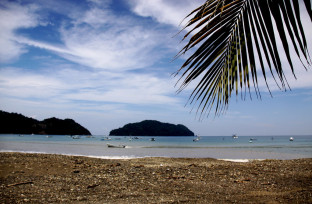
Playa Herradura

Bahía Drake
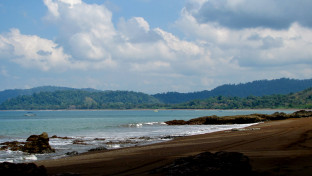
Bahía Drake

San José
San José
Tortuga Island
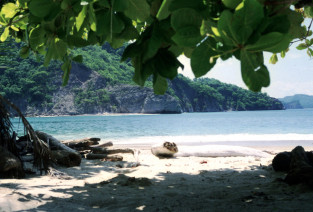
Tortuga Island

Colón

Colón
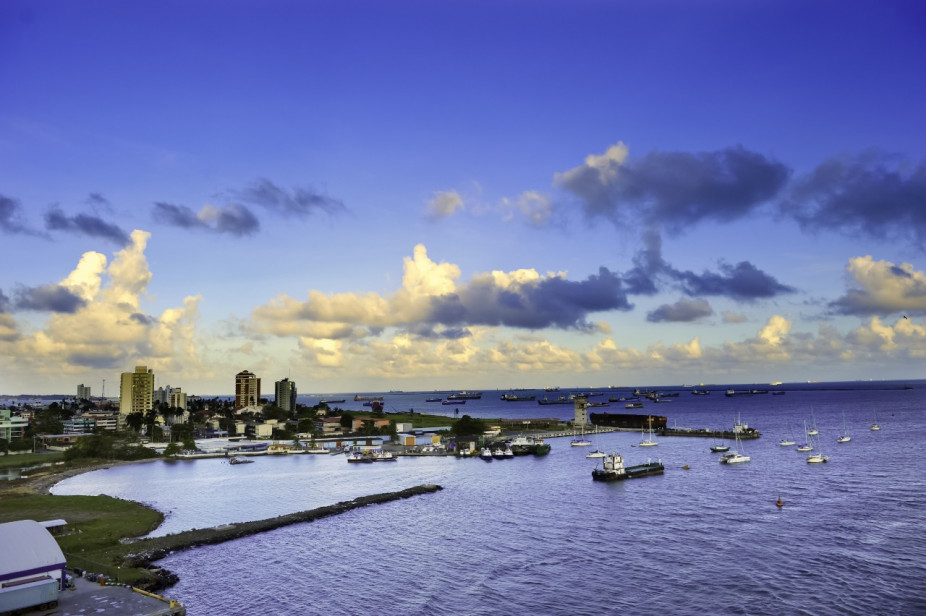
Fuerte Amador
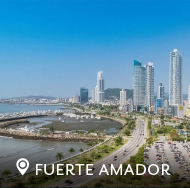
Fuerte Amador

Fuerte Amador is a growing port in the Pacific side of the Panama Canal. It is situated near to Panama City, which is a fascinating mix of old in the Old Town of the city, with charming winding cobbled streets and Spanish Colonial buildings, with balconies and bourgainvillea draping down - and new, with shiny skyscrapers, fantastic shopping and sleek buildings in the new part of the city.
It is located near the Miraflores Locks, where ships can be viewed passing through the engineering marvel that is the Panama Canal.
Panama City
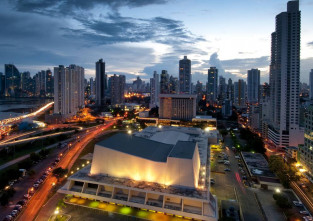
Panama City
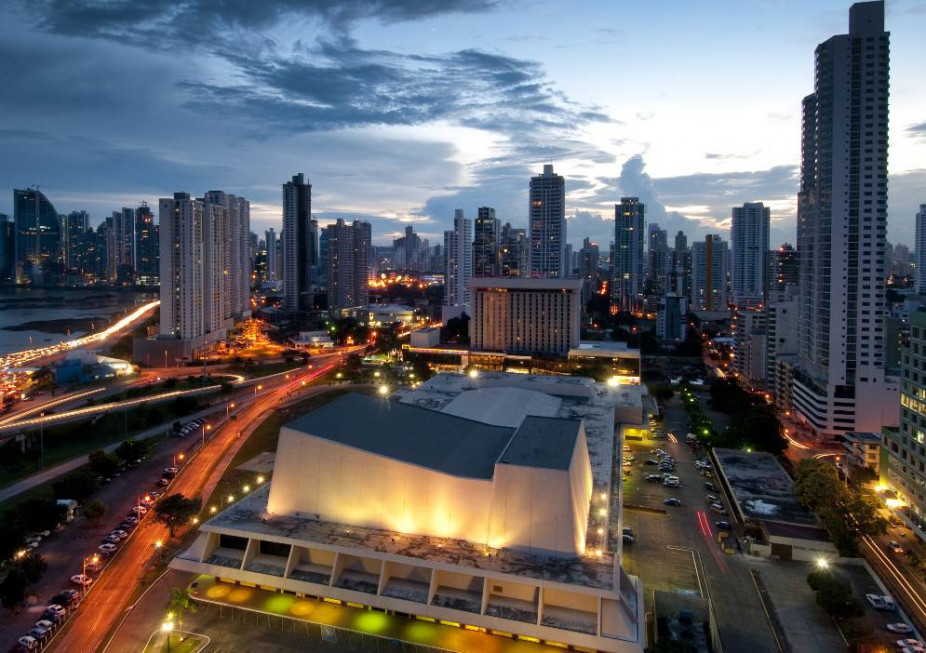
Panama City is the capital of Panama. It is a fascinating mix of old in the Old Town of the city, with charming winding cobbled streets and Spanish Colonial buildings, with balconies and bourgainvillea draping down - and new, with shiny skyscrapers, fantastic shopping and sleek buildings in the new part of the city.
It is located near the Miraflores Locks, where ships can be viewed passing through the engineering marvel that is the Panama Canal.
Gatun Lake

Gatun Lake
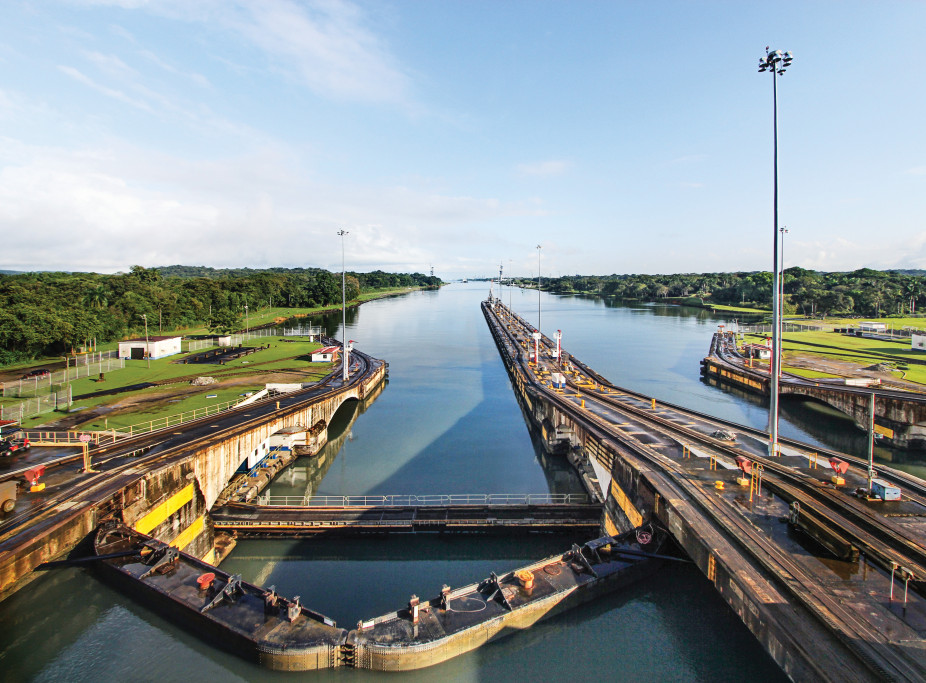
Gatun Lake is a man made freshwater lake to the south of Colón, Panama. It carries ships 33km of the way along the Canal. It was created by building the Gatun Dam across the Chagres River from 1907-1913. It is also the name of the most famous of the canal's locks - the Gatun Locks, which are located at the entrance into the canal from the lake.
Cruise ships sail into the lake on half and full Panama Canal transits. It isn't a port itself, but some ships stop here, where shore excursion tender boats take guests out to explore the lake and area more from a moored point in the lake, before continuing the canal transit.
Local wildlife often be seen from the ship while in the lake.
Bocas del Toro
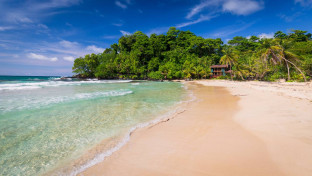
Bocas del Toro

Bocas del Toro - mouth of the bull - is a town and province in Panama, located on the southern tip of Isla Colón, in the Caribbean Sea.
It is a fantastic place to visit for nature lovers. To the north, Bird Island hosts the rare red-billed tropic bird. It is home to stunning beaches, including the sheltered Starfish Beach to the northwest and popular surfing spot Bluff Beach, to the east.
Local artisans sell their hand made wares in Simón Bolívar Park in the town centre.
Isla Parida
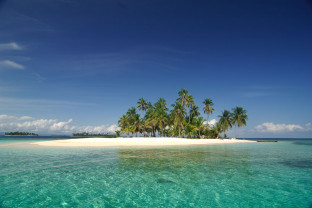
Isla Parida

Isla Parida is a beautiful uninhabited island, and the largest island in Panama’s Chiriqui Gulf National Marine Park, located on the Pacific Ocean side of Panama.
It was given UNESCO protective status in 1994, UNESCO along with the group of islands in the archipelago that it belongs to, that spans 57 miles.
The island's soft sandy beaches attrack wildlife including seabirds and turtles. The island has interesting ecosystems, with mangrove swamps, marine meadows. tropical forests and 19 coral reefs.
Cruise ships are required to obtain a special permit before visiting the national park and then must anchor in the sea while the passengers are transported by inflatable boats to the wondrous nature.
Cristóbal
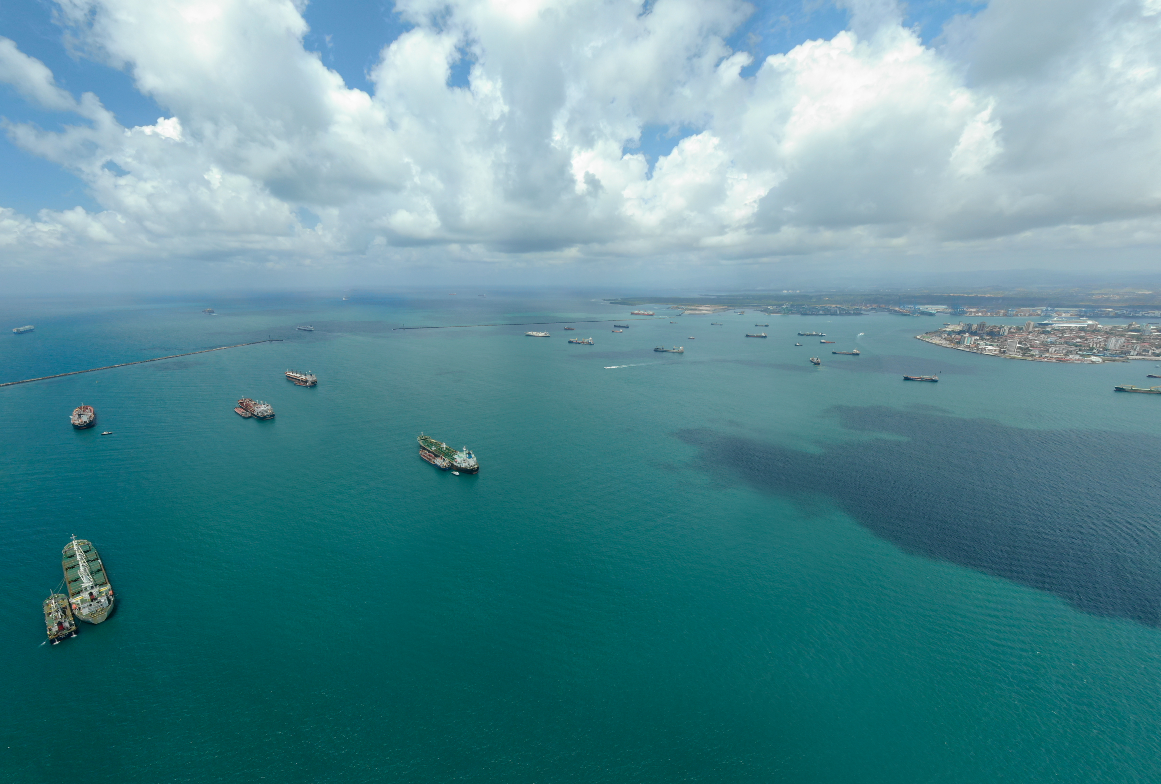
Cristóbal

Cristobal is the port for Colon, on the western edges of Manzanillo Island. It is named after the Italian explorer Christopher Columbus, who landed there in 1502.
It is located in Limon Bay, at the southeastern part of Colon city, at the Atlantic entrance of the Panama Canal.
15,000 cruise ships dock here annually and is is an important seaport for routes across the Caribbean and Atlantic Ocean. It is surrouned by high-rise towns and rainforest, home to many species of birds and nine ancient indigenous tribes.
San Blas Islands
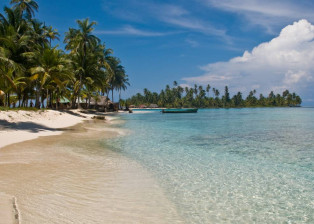
San Blas Islands
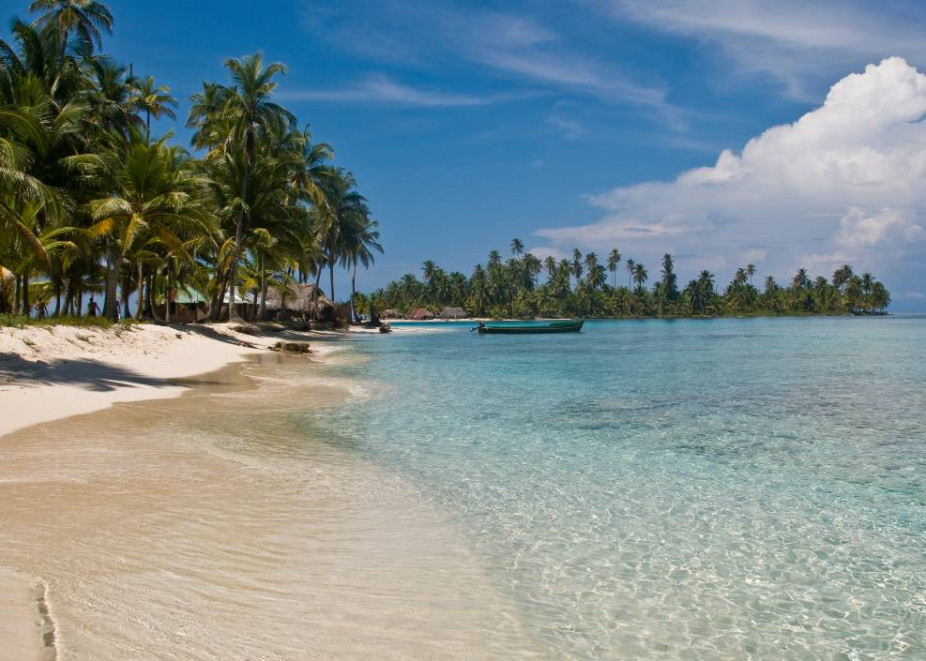
Darién National Park
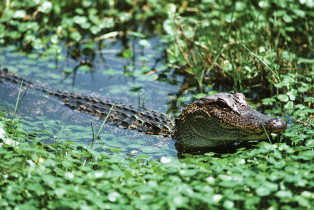
Darién National Park

Darien National Park forms a bridge between North and South America. The park has varied habitats, with rocky coasts, sandy beaches, mangroves, swamps and tropical rainforests with a plethora of wildlife.
Two ancient traditional tribes live in the rainforest.
Portobelo
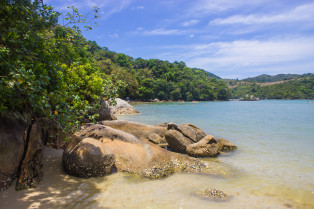
Portobelo

Portobelo earns its name, which means beautiful. This historic port, founded in 1597 is in Colon province in Panama, near the Atlantic entrance to the Panama Canal.
Colonial Spanish forts and lush vegetation surround the quaint port with small fishing boats in this pretty town that was once the largest colonial Spanish port in Central America, and is why is it now a UNESCO World Heritage site.
Pearl Islands
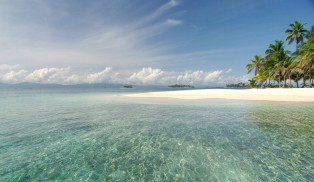
Pearl Islands
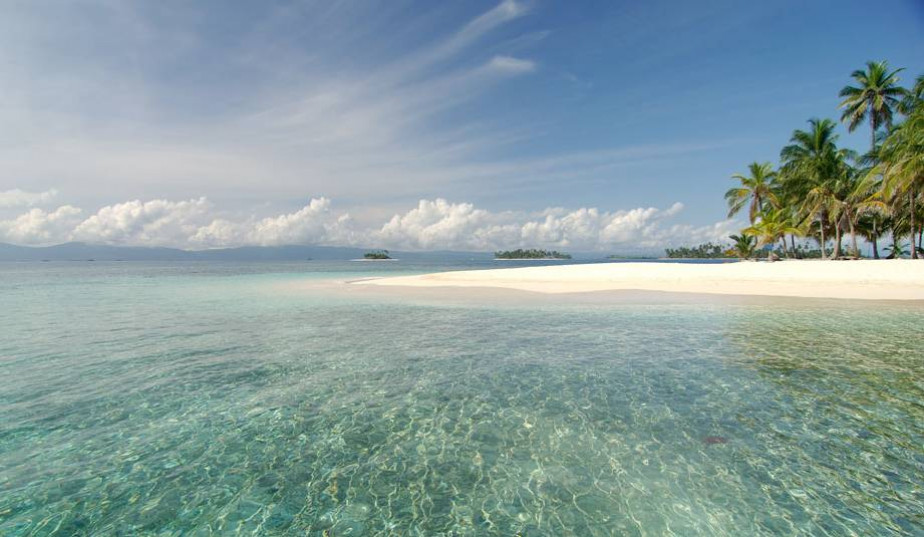
The Pearl Islands in Panama were once only a destination for the rich and famous, but have recently become accessible to others, to experience their natural beauty.
The archipelago off the Pacific coast in the Gulf of Panama has more than 200, mostly uninhabited islands.
The largest island is Isla Del Rey. Favourite islands with tourists are Contadora Island, which has 13 beaches, and Isla Saboga.
The Pearl Islands offer beautiful white sand beaches, scuba diving and whale watching and is popular with nature lovers to see the wildlife.
Balboa (Panama City)
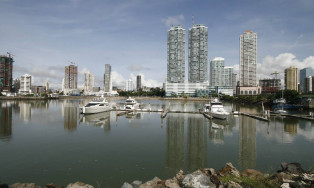
Balboa (Panama City)
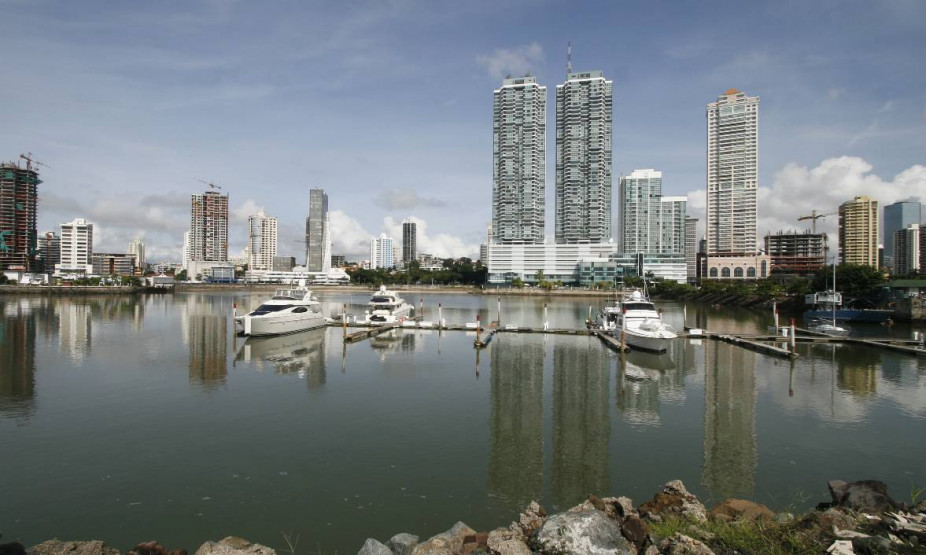
Balboa is the port for Panama City, which is the capital of Panama.
It is a fascinating mix of old in the Old Town of the city, with charming winding cobbled streets and Spanish Colonial buildings, with balconies and bourgainvillea draping down - and new, with shiny skyscrapers, fantastic shopping and sleek buildings in the new part of the city.
It is located near the Miraflores Locks, where ships can be viewed passing through the engineering marvel that is the Panama Canal.
Belize City
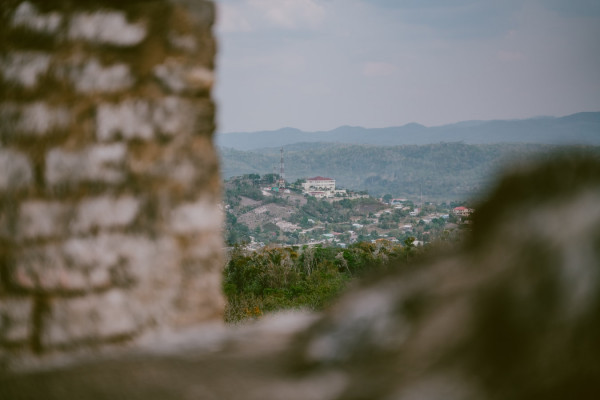
Belize City
Harvest Caye
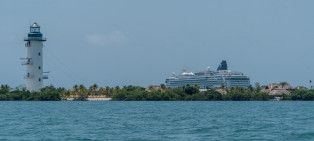
Harvest Caye
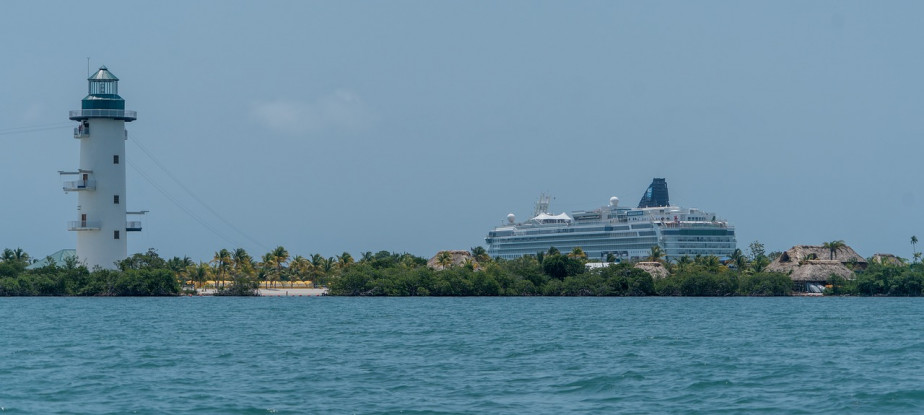
Lighthouse Reef
-custom_thumb.jpg)
Lighthouse Reef
-custom_small_banner.jpg)
Cozumel

Cozumel
Measuring 33 miles long and 9 miles wide, this little island offers big rewards. Known for it’s stunning natural beauty, glass-clear aquamarine seas, and vast marine life, Cozumel will always be a popular cruise ship port of call and firm favourite amongst scuba divers – owing to it’s multiple diving spots across 600 miles of coral reef.
Venture off the beaten path to find deserted, windswept beaches and wild, vibrant natural parks, or head directly across from the docks to Plaza Central, the heart of San Miguel - Residents often congregate here in the evening, especially on weekends, when free concerts begin at 8pm.
Most of the island's restaurants, hotels, stores, and dive shops are concentrated downtown and along the two hotel zones that fan out along the leeward coast to the north and south of San Miguel.
Things To See, Do & Taste In Cozumel:
- See: Mayan Ruins of Tulum - One of the most visited archaeological sites in Mexico. Sat on a seaside cliff alongside turquoise waters.
- Do: All Terrain Xrail Expedition – A journey into the heart of Cozumel's jungle.
- Taste: Cochinita Pibil - Slow roasted pork usually served with pickled onions on tacos or tortas (also known as Torta de Cochinita Pibil or Taco de Cochinita Pibil).
Costa Maya

Costa Maya

Costa Maya is the gateway to the Mayan ruins of Mexico.
The specifically created port of Costa Maya is a destination in itself, with multiple restaurants, bars, swimming pools, water sports, shops and market stalls where visitors can buy local crafts from. There is even the Lost Mayan Kingdom Water Park, just a few minutes' walk from the ship.
To see the real lost Mayan kingdom, take a tour out to see the temples and pyramids of Chacchoben in the jungle, just 45 minutes' drive from the port. The pyramids were lost to the world until they were rediscovered in 1931, so are very well preserved and a fantastic way to learn about the ancient Mayan civilisation.
Things To See, Do & Taste In Costa Maya:
- See: Mayan Ruins.
- Do: Scuba Dive the Mesoamerican Barrier Reef - One of the World’s best scuba dive sites and the largest reef system in the Western Hemisphere.
- Taste: Enchiladas – Dating back to the Mayans, Enchiladas consist of a corn tortilla rolled around meat, cheese, beans, potatoes, and/or vegetables and covered with a savoury sauce.
Ensenada

Ensenada

Cabo San Lucas

Cabo San Lucas

Cabo San Lucas is a popular resort town in Baja California Sur in Mexico.
It offers a lot for visitors with great beaches, lots of varied marine life and stunning natural scenery nearby.
Nearby attrations reachable by boat are the romantic Lover's Beach and the arch of Cabo San Lucas.
Many local restaurants with delicious Mexican food are available around the port, which is easily walkable from the tender stop.
Puerto Vallarta

Puerto Vallarta
Puerto Vallarta is a popular and busy resort city in Mexico that lies nestled between the Sierra Madre mountains and a long beach shore on the Pacific Ocean.
It has modern hotel complexes, a stunning long white sandy beach, bustling malecon (boardwalk) and interesting Old Town, which has intricate old churches, squares and fascinating architecture.
It is perfect for adventure seekers, with many activities around the area, plus watersports, luxury and pampering in the resorts and spas, and delicious Mexican cuisine in the multitude of cosy local tavernas.
Progreso

Progreso

Mazatlán

Mazatlán

Mazatlán is known as the 'pearl of the Pacific', as it offers the attractions of wonderful weather, reasonable costs in port, in a gorgeous location.
This rare colonial Mexican town on the coast, has miles of white powder sand beaches, fascintating cultural events year-round and wonderful seafood. Shrimp and lobster are a speciality and recommended to sample ashore for shellfish fans.
Huatulco (Santa María Huatulco)

Huatulco (Santa María Huatulco)

Acapulco

Acapulco

Puerto Chiapas
Puerto Chiapas
La Paz

La Paz

Manzanillo, Mexico

Manzanillo, Mexico

Puerto Quetzal

Puerto Quetzal

Santo Tomás de Castilla

Santo Tomás de Castilla

Lívingston

Lívingston

Roatán Island

Roatán Island

Trujillo

Trujillo

Water Caye, Isla Utila
Water Caye, Isla Utila
Útila Island

Útila Island

Amapala

Amapala

Mahogany Bay, Roatan
Mahogany Bay, Roatan
Coxen Hole, Roatan
Coxen Hole, Roatan
Cochinos Cays
-custom_thumb.jpg)
Cochinos Cays
-custom_small_banner.jpg)
San Juan del Sur
-custom_thumb.jpg)
San Juan del Sur
-custom_small_banner.jpg)
Corinto

Corinto

Corn Island

Corn Island

Acajutla
-custom_thumb.jpg)
Acajutla
-custom_small_banner.jpg)
La Union

La Union

Puerto Limón

Puerto Limón

Puntarenas

Puntarenas

Puerto Caldera

Puerto Caldera

Quepos (Puerto Quepos)

Quepos (Puerto Quepos)

Puerto Jimenez, Costa Rica

Puerto Jimenez, Costa Rica

Golfito

Golfito

Culebra Bay

Culebra Bay

Curú Wildlife Refuge

Curú Wildlife Refuge

Playa Herradura

Playa Herradura

Bahía Drake

Bahía Drake

San José
San José
Tortuga Island

Tortuga Island

Colón

Colón

Fuerte Amador

Fuerte Amador

Fuerte Amador is a growing port in the Pacific side of the Panama Canal. It is situated near to Panama City, which is a fascinating mix of old in the Old Town of the city, with charming winding cobbled streets and Spanish Colonial buildings, with balconies and bourgainvillea draping down - and new, with shiny skyscrapers, fantastic shopping and sleek buildings in the new part of the city.
It is located near the Miraflores Locks, where ships can be viewed passing through the engineering marvel that is the Panama Canal.
Panama City

Panama City

Panama City is the capital of Panama. It is a fascinating mix of old in the Old Town of the city, with charming winding cobbled streets and Spanish Colonial buildings, with balconies and bourgainvillea draping down - and new, with shiny skyscrapers, fantastic shopping and sleek buildings in the new part of the city.
It is located near the Miraflores Locks, where ships can be viewed passing through the engineering marvel that is the Panama Canal.
Gatun Lake

Gatun Lake

Gatun Lake is a man made freshwater lake to the south of Colón, Panama. It carries ships 33km of the way along the Canal. It was created by building the Gatun Dam across the Chagres River from 1907-1913. It is also the name of the most famous of the canal's locks - the Gatun Locks, which are located at the entrance into the canal from the lake.
Cruise ships sail into the lake on half and full Panama Canal transits. It isn't a port itself, but some ships stop here, where shore excursion tender boats take guests out to explore the lake and area more from a moored point in the lake, before continuing the canal transit.
Local wildlife often be seen from the ship while in the lake.
Bocas del Toro

Bocas del Toro

Bocas del Toro - mouth of the bull - is a town and province in Panama, located on the southern tip of Isla Colón, in the Caribbean Sea.
It is a fantastic place to visit for nature lovers. To the north, Bird Island hosts the rare red-billed tropic bird. It is home to stunning beaches, including the sheltered Starfish Beach to the northwest and popular surfing spot Bluff Beach, to the east.
Local artisans sell their hand made wares in Simón Bolívar Park in the town centre.
Isla Parida

Isla Parida

Isla Parida is a beautiful uninhabited island, and the largest island in Panama’s Chiriqui Gulf National Marine Park, located on the Pacific Ocean side of Panama.
It was given UNESCO protective status in 1994, UNESCO along with the group of islands in the archipelago that it belongs to, that spans 57 miles.
The island's soft sandy beaches attrack wildlife including seabirds and turtles. The island has interesting ecosystems, with mangrove swamps, marine meadows. tropical forests and 19 coral reefs.
Cruise ships are required to obtain a special permit before visiting the national park and then must anchor in the sea while the passengers are transported by inflatable boats to the wondrous nature.
Cristóbal

Cristóbal

Cristobal is the port for Colon, on the western edges of Manzanillo Island. It is named after the Italian explorer Christopher Columbus, who landed there in 1502.
It is located in Limon Bay, at the southeastern part of Colon city, at the Atlantic entrance of the Panama Canal.
15,000 cruise ships dock here annually and is is an important seaport for routes across the Caribbean and Atlantic Ocean. It is surrouned by high-rise towns and rainforest, home to many species of birds and nine ancient indigenous tribes.
San Blas Islands

San Blas Islands

Darién National Park

Darién National Park

Darien National Park forms a bridge between North and South America. The park has varied habitats, with rocky coasts, sandy beaches, mangroves, swamps and tropical rainforests with a plethora of wildlife.
Two ancient traditional tribes live in the rainforest.
Portobelo

Portobelo

Portobelo earns its name, which means beautiful. This historic port, founded in 1597 is in Colon province in Panama, near the Atlantic entrance to the Panama Canal.
Colonial Spanish forts and lush vegetation surround the quaint port with small fishing boats in this pretty town that was once the largest colonial Spanish port in Central America, and is why is it now a UNESCO World Heritage site.
Pearl Islands

Pearl Islands

The Pearl Islands in Panama were once only a destination for the rich and famous, but have recently become accessible to others, to experience their natural beauty.
The archipelago off the Pacific coast in the Gulf of Panama has more than 200, mostly uninhabited islands.
The largest island is Isla Del Rey. Favourite islands with tourists are Contadora Island, which has 13 beaches, and Isla Saboga.
The Pearl Islands offer beautiful white sand beaches, scuba diving and whale watching and is popular with nature lovers to see the wildlife.
Balboa (Panama City)

Balboa (Panama City)

Balboa is the port for Panama City, which is the capital of Panama.
It is a fascinating mix of old in the Old Town of the city, with charming winding cobbled streets and Spanish Colonial buildings, with balconies and bourgainvillea draping down - and new, with shiny skyscrapers, fantastic shopping and sleek buildings in the new part of the city.
It is located near the Miraflores Locks, where ships can be viewed passing through the engineering marvel that is the Panama Canal.
Belize City

Belize City
Harvest Caye

Harvest Caye

Lighthouse Reef
-custom_thumb.jpg)
Lighthouse Reef
-custom_small_banner.jpg)
Cozumel

Cozumel
Measuring 33 miles long and 9 miles wide, this little island offers big rewards. Known for it’s stunning natural beauty, glass-clear aquamarine seas, and vast marine life, Cozumel will always be a popular cruise ship port of call and firm favourite amongst scuba divers – owing to it’s multiple diving spots across 600 miles of coral reef.
Venture off the beaten path to find deserted, windswept beaches and wild, vibrant natural parks, or head directly across from the docks to Plaza Central, the heart of San Miguel - Residents often congregate here in the evening, especially on weekends, when free concerts begin at 8pm.
Most of the island's restaurants, hotels, stores, and dive shops are concentrated downtown and along the two hotel zones that fan out along the leeward coast to the north and south of San Miguel.
Things To See, Do & Taste In Cozumel:
- See: Mayan Ruins of Tulum - One of the most visited archaeological sites in Mexico. Sat on a seaside cliff alongside turquoise waters.
- Do: All Terrain Xrail Expedition – A journey into the heart of Cozumel's jungle.
- Taste: Cochinita Pibil - Slow roasted pork usually served with pickled onions on tacos or tortas (also known as Torta de Cochinita Pibil or Taco de Cochinita Pibil).
Costa Maya

Costa Maya

Costa Maya is the gateway to the Mayan ruins of Mexico.
The specifically created port of Costa Maya is a destination in itself, with multiple restaurants, bars, swimming pools, water sports, shops and market stalls where visitors can buy local crafts from. There is even the Lost Mayan Kingdom Water Park, just a few minutes' walk from the ship.
To see the real lost Mayan kingdom, take a tour out to see the temples and pyramids of Chacchoben in the jungle, just 45 minutes' drive from the port. The pyramids were lost to the world until they were rediscovered in 1931, so are very well preserved and a fantastic way to learn about the ancient Mayan civilisation.
Things To See, Do & Taste In Costa Maya:
- See: Mayan Ruins.
- Do: Scuba Dive the Mesoamerican Barrier Reef - One of the World’s best scuba dive sites and the largest reef system in the Western Hemisphere.
- Taste: Enchiladas – Dating back to the Mayans, Enchiladas consist of a corn tortilla rolled around meat, cheese, beans, potatoes, and/or vegetables and covered with a savoury sauce.
Ensenada

Ensenada

Cabo San Lucas

Cabo San Lucas

Cabo San Lucas is a popular resort town in Baja California Sur in Mexico.
It offers a lot for visitors with great beaches, lots of varied marine life and stunning natural scenery nearby.
Nearby attrations reachable by boat are the romantic Lover's Beach and the arch of Cabo San Lucas.
Many local restaurants with delicious Mexican food are available around the port, which is easily walkable from the tender stop.
Puerto Vallarta

Puerto Vallarta
Puerto Vallarta is a popular and busy resort city in Mexico that lies nestled between the Sierra Madre mountains and a long beach shore on the Pacific Ocean.
It has modern hotel complexes, a stunning long white sandy beach, bustling malecon (boardwalk) and interesting Old Town, which has intricate old churches, squares and fascinating architecture.
It is perfect for adventure seekers, with many activities around the area, plus watersports, luxury and pampering in the resorts and spas, and delicious Mexican cuisine in the multitude of cosy local tavernas.
Progreso

Progreso

Mazatlán

Mazatlán

Mazatlán is known as the 'pearl of the Pacific', as it offers the attractions of wonderful weather, reasonable costs in port, in a gorgeous location.
This rare colonial Mexican town on the coast, has miles of white powder sand beaches, fascintating cultural events year-round and wonderful seafood. Shrimp and lobster are a speciality and recommended to sample ashore for shellfish fans.
Huatulco (Santa María Huatulco)

Huatulco (Santa María Huatulco)

Acapulco

Acapulco

Puerto Chiapas
Puerto Chiapas
La Paz

La Paz

Manzanillo, Mexico

Manzanillo, Mexico

Puerto Quetzal

Puerto Quetzal

Santo Tomás de Castilla

Santo Tomás de Castilla

Lívingston

Lívingston

Roatán Island

Roatán Island

Trujillo

Trujillo

Water Caye, Isla Utila
Water Caye, Isla Utila
Útila Island

Útila Island

Amapala

Amapala

Mahogany Bay, Roatan
Mahogany Bay, Roatan
Coxen Hole, Roatan
Coxen Hole, Roatan
Cochinos Cays
-custom_thumb.jpg)
Cochinos Cays
-custom_small_banner.jpg)
San Juan del Sur
-custom_thumb.jpg)
San Juan del Sur
-custom_small_banner.jpg)
Corinto

Corinto

Corn Island

Corn Island

Acajutla
-custom_thumb.jpg)
Acajutla
-custom_small_banner.jpg)
La Union

La Union

Puerto Limón

Puerto Limón

Puntarenas

Puntarenas

Puerto Caldera

Puerto Caldera

Quepos (Puerto Quepos)

Quepos (Puerto Quepos)

Puerto Jimenez, Costa Rica

Puerto Jimenez, Costa Rica

Golfito

Golfito

Culebra Bay

Culebra Bay

Curú Wildlife Refuge

Curú Wildlife Refuge

Playa Herradura

Playa Herradura

Bahía Drake

Bahía Drake

San José
San José
Tortuga Island

Tortuga Island

Colón

Colón

Fuerte Amador

Fuerte Amador

Fuerte Amador is a growing port in the Pacific side of the Panama Canal. It is situated near to Panama City, which is a fascinating mix of old in the Old Town of the city, with charming winding cobbled streets and Spanish Colonial buildings, with balconies and bourgainvillea draping down - and new, with shiny skyscrapers, fantastic shopping and sleek buildings in the new part of the city.
It is located near the Miraflores Locks, where ships can be viewed passing through the engineering marvel that is the Panama Canal.
Panama City

Panama City

Panama City is the capital of Panama. It is a fascinating mix of old in the Old Town of the city, with charming winding cobbled streets and Spanish Colonial buildings, with balconies and bourgainvillea draping down - and new, with shiny skyscrapers, fantastic shopping and sleek buildings in the new part of the city.
It is located near the Miraflores Locks, where ships can be viewed passing through the engineering marvel that is the Panama Canal.
Gatun Lake

Gatun Lake

Gatun Lake is a man made freshwater lake to the south of Colón, Panama. It carries ships 33km of the way along the Canal. It was created by building the Gatun Dam across the Chagres River from 1907-1913. It is also the name of the most famous of the canal's locks - the Gatun Locks, which are located at the entrance into the canal from the lake.
Cruise ships sail into the lake on half and full Panama Canal transits. It isn't a port itself, but some ships stop here, where shore excursion tender boats take guests out to explore the lake and area more from a moored point in the lake, before continuing the canal transit.
Local wildlife often be seen from the ship while in the lake.
Bocas del Toro

Bocas del Toro

Bocas del Toro - mouth of the bull - is a town and province in Panama, located on the southern tip of Isla Colón, in the Caribbean Sea.
It is a fantastic place to visit for nature lovers. To the north, Bird Island hosts the rare red-billed tropic bird. It is home to stunning beaches, including the sheltered Starfish Beach to the northwest and popular surfing spot Bluff Beach, to the east.
Local artisans sell their hand made wares in Simón Bolívar Park in the town centre.
Isla Parida

Isla Parida

Isla Parida is a beautiful uninhabited island, and the largest island in Panama’s Chiriqui Gulf National Marine Park, located on the Pacific Ocean side of Panama.
It was given UNESCO protective status in 1994, UNESCO along with the group of islands in the archipelago that it belongs to, that spans 57 miles.
The island's soft sandy beaches attrack wildlife including seabirds and turtles. The island has interesting ecosystems, with mangrove swamps, marine meadows. tropical forests and 19 coral reefs.
Cruise ships are required to obtain a special permit before visiting the national park and then must anchor in the sea while the passengers are transported by inflatable boats to the wondrous nature.
Cristóbal

Cristóbal

Cristobal is the port for Colon, on the western edges of Manzanillo Island. It is named after the Italian explorer Christopher Columbus, who landed there in 1502.
It is located in Limon Bay, at the southeastern part of Colon city, at the Atlantic entrance of the Panama Canal.
15,000 cruise ships dock here annually and is is an important seaport for routes across the Caribbean and Atlantic Ocean. It is surrouned by high-rise towns and rainforest, home to many species of birds and nine ancient indigenous tribes.
San Blas Islands

San Blas Islands

Darién National Park

Darién National Park

Darien National Park forms a bridge between North and South America. The park has varied habitats, with rocky coasts, sandy beaches, mangroves, swamps and tropical rainforests with a plethora of wildlife.
Two ancient traditional tribes live in the rainforest.
Portobelo

Portobelo

Portobelo earns its name, which means beautiful. This historic port, founded in 1597 is in Colon province in Panama, near the Atlantic entrance to the Panama Canal.
Colonial Spanish forts and lush vegetation surround the quaint port with small fishing boats in this pretty town that was once the largest colonial Spanish port in Central America, and is why is it now a UNESCO World Heritage site.
Pearl Islands

Pearl Islands

The Pearl Islands in Panama were once only a destination for the rich and famous, but have recently become accessible to others, to experience their natural beauty.
The archipelago off the Pacific coast in the Gulf of Panama has more than 200, mostly uninhabited islands.
The largest island is Isla Del Rey. Favourite islands with tourists are Contadora Island, which has 13 beaches, and Isla Saboga.
The Pearl Islands offer beautiful white sand beaches, scuba diving and whale watching and is popular with nature lovers to see the wildlife.
Balboa (Panama City)

Balboa (Panama City)

Balboa is the port for Panama City, which is the capital of Panama.
It is a fascinating mix of old in the Old Town of the city, with charming winding cobbled streets and Spanish Colonial buildings, with balconies and bourgainvillea draping down - and new, with shiny skyscrapers, fantastic shopping and sleek buildings in the new part of the city.
It is located near the Miraflores Locks, where ships can be viewed passing through the engineering marvel that is the Panama Canal.
Belize City

Belize City
Harvest Caye

Harvest Caye

Lighthouse Reef
-custom_thumb.jpg)
Lighthouse Reef
-custom_small_banner.jpg)
Cozumel

Cozumel
Measuring 33 miles long and 9 miles wide, this little island offers big rewards. Known for it’s stunning natural beauty, glass-clear aquamarine seas, and vast marine life, Cozumel will always be a popular cruise ship port of call and firm favourite amongst scuba divers – owing to it’s multiple diving spots across 600 miles of coral reef.
Venture off the beaten path to find deserted, windswept beaches and wild, vibrant natural parks, or head directly across from the docks to Plaza Central, the heart of San Miguel - Residents often congregate here in the evening, especially on weekends, when free concerts begin at 8pm.
Most of the island's restaurants, hotels, stores, and dive shops are concentrated downtown and along the two hotel zones that fan out along the leeward coast to the north and south of San Miguel.
Things To See, Do & Taste In Cozumel:
- See: Mayan Ruins of Tulum - One of the most visited archaeological sites in Mexico. Sat on a seaside cliff alongside turquoise waters.
- Do: All Terrain Xrail Expedition – A journey into the heart of Cozumel's jungle.
- Taste: Cochinita Pibil - Slow roasted pork usually served with pickled onions on tacos or tortas (also known as Torta de Cochinita Pibil or Taco de Cochinita Pibil).
Costa Maya

Costa Maya

Costa Maya is the gateway to the Mayan ruins of Mexico.
The specifically created port of Costa Maya is a destination in itself, with multiple restaurants, bars, swimming pools, water sports, shops and market stalls where visitors can buy local crafts from. There is even the Lost Mayan Kingdom Water Park, just a few minutes' walk from the ship.
To see the real lost Mayan kingdom, take a tour out to see the temples and pyramids of Chacchoben in the jungle, just 45 minutes' drive from the port. The pyramids were lost to the world until they were rediscovered in 1931, so are very well preserved and a fantastic way to learn about the ancient Mayan civilisation.
Things To See, Do & Taste In Costa Maya:
- See: Mayan Ruins.
- Do: Scuba Dive the Mesoamerican Barrier Reef - One of the World’s best scuba dive sites and the largest reef system in the Western Hemisphere.
- Taste: Enchiladas – Dating back to the Mayans, Enchiladas consist of a corn tortilla rolled around meat, cheese, beans, potatoes, and/or vegetables and covered with a savoury sauce.
Ensenada

Ensenada

Cabo San Lucas

Cabo San Lucas

Cabo San Lucas is a popular resort town in Baja California Sur in Mexico.
It offers a lot for visitors with great beaches, lots of varied marine life and stunning natural scenery nearby.
Nearby attrations reachable by boat are the romantic Lover's Beach and the arch of Cabo San Lucas.
Many local restaurants with delicious Mexican food are available around the port, which is easily walkable from the tender stop.
Puerto Vallarta

Puerto Vallarta
Puerto Vallarta is a popular and busy resort city in Mexico that lies nestled between the Sierra Madre mountains and a long beach shore on the Pacific Ocean.
It has modern hotel complexes, a stunning long white sandy beach, bustling malecon (boardwalk) and interesting Old Town, which has intricate old churches, squares and fascinating architecture.
It is perfect for adventure seekers, with many activities around the area, plus watersports, luxury and pampering in the resorts and spas, and delicious Mexican cuisine in the multitude of cosy local tavernas.
Progreso

Progreso

Mazatlán

Mazatlán

Mazatlán is known as the 'pearl of the Pacific', as it offers the attractions of wonderful weather, reasonable costs in port, in a gorgeous location.
This rare colonial Mexican town on the coast, has miles of white powder sand beaches, fascintating cultural events year-round and wonderful seafood. Shrimp and lobster are a speciality and recommended to sample ashore for shellfish fans.
Huatulco (Santa María Huatulco)

Huatulco (Santa María Huatulco)

Acapulco

Acapulco

Puerto Chiapas
Puerto Chiapas
La Paz

La Paz

Manzanillo, Mexico

Manzanillo, Mexico

Puerto Quetzal

Puerto Quetzal

Santo Tomás de Castilla

Santo Tomás de Castilla

Lívingston

Lívingston

Roatán Island

Roatán Island

Trujillo

Trujillo

Water Caye, Isla Utila
Water Caye, Isla Utila
Útila Island

Útila Island

Amapala

Amapala

Mahogany Bay, Roatan
Mahogany Bay, Roatan
Coxen Hole, Roatan
Coxen Hole, Roatan
Cochinos Cays
-custom_thumb.jpg)
Cochinos Cays
-custom_small_banner.jpg)
San Juan del Sur
-custom_thumb.jpg)
San Juan del Sur
-custom_small_banner.jpg)
Corinto

Corinto

Corn Island

Corn Island

Acajutla
-custom_thumb.jpg)
Acajutla
-custom_small_banner.jpg)
La Union

La Union

Puerto Limón

Puerto Limón

Puntarenas

Puntarenas

Puerto Caldera

Puerto Caldera

Quepos (Puerto Quepos)

Quepos (Puerto Quepos)

Puerto Jimenez, Costa Rica

Puerto Jimenez, Costa Rica

Golfito

Golfito

Culebra Bay

Culebra Bay

Curú Wildlife Refuge

Curú Wildlife Refuge

Playa Herradura

Playa Herradura

Bahía Drake

Bahía Drake

San José
San José
Tortuga Island

Tortuga Island

Colón

Colón

Fuerte Amador

Fuerte Amador

Fuerte Amador is a growing port in the Pacific side of the Panama Canal. It is situated near to Panama City, which is a fascinating mix of old in the Old Town of the city, with charming winding cobbled streets and Spanish Colonial buildings, with balconies and bourgainvillea draping down - and new, with shiny skyscrapers, fantastic shopping and sleek buildings in the new part of the city.
It is located near the Miraflores Locks, where ships can be viewed passing through the engineering marvel that is the Panama Canal.
Panama City

Panama City

Panama City is the capital of Panama. It is a fascinating mix of old in the Old Town of the city, with charming winding cobbled streets and Spanish Colonial buildings, with balconies and bourgainvillea draping down - and new, with shiny skyscrapers, fantastic shopping and sleek buildings in the new part of the city.
It is located near the Miraflores Locks, where ships can be viewed passing through the engineering marvel that is the Panama Canal.
Gatun Lake

Gatun Lake

Gatun Lake is a man made freshwater lake to the south of Colón, Panama. It carries ships 33km of the way along the Canal. It was created by building the Gatun Dam across the Chagres River from 1907-1913. It is also the name of the most famous of the canal's locks - the Gatun Locks, which are located at the entrance into the canal from the lake.
Cruise ships sail into the lake on half and full Panama Canal transits. It isn't a port itself, but some ships stop here, where shore excursion tender boats take guests out to explore the lake and area more from a moored point in the lake, before continuing the canal transit.
Local wildlife often be seen from the ship while in the lake.
Bocas del Toro

Bocas del Toro

Bocas del Toro - mouth of the bull - is a town and province in Panama, located on the southern tip of Isla Colón, in the Caribbean Sea.
It is a fantastic place to visit for nature lovers. To the north, Bird Island hosts the rare red-billed tropic bird. It is home to stunning beaches, including the sheltered Starfish Beach to the northwest and popular surfing spot Bluff Beach, to the east.
Local artisans sell their hand made wares in Simón Bolívar Park in the town centre.
Isla Parida

Isla Parida

Isla Parida is a beautiful uninhabited island, and the largest island in Panama’s Chiriqui Gulf National Marine Park, located on the Pacific Ocean side of Panama.
It was given UNESCO protective status in 1994, UNESCO along with the group of islands in the archipelago that it belongs to, that spans 57 miles.
The island's soft sandy beaches attrack wildlife including seabirds and turtles. The island has interesting ecosystems, with mangrove swamps, marine meadows. tropical forests and 19 coral reefs.
Cruise ships are required to obtain a special permit before visiting the national park and then must anchor in the sea while the passengers are transported by inflatable boats to the wondrous nature.
Cristóbal

Cristóbal

Cristobal is the port for Colon, on the western edges of Manzanillo Island. It is named after the Italian explorer Christopher Columbus, who landed there in 1502.
It is located in Limon Bay, at the southeastern part of Colon city, at the Atlantic entrance of the Panama Canal.
15,000 cruise ships dock here annually and is is an important seaport for routes across the Caribbean and Atlantic Ocean. It is surrouned by high-rise towns and rainforest, home to many species of birds and nine ancient indigenous tribes.
San Blas Islands

San Blas Islands

Darién National Park

Darién National Park

Darien National Park forms a bridge between North and South America. The park has varied habitats, with rocky coasts, sandy beaches, mangroves, swamps and tropical rainforests with a plethora of wildlife.
Two ancient traditional tribes live in the rainforest.
Portobelo

Portobelo

Portobelo earns its name, which means beautiful. This historic port, founded in 1597 is in Colon province in Panama, near the Atlantic entrance to the Panama Canal.
Colonial Spanish forts and lush vegetation surround the quaint port with small fishing boats in this pretty town that was once the largest colonial Spanish port in Central America, and is why is it now a UNESCO World Heritage site.
Pearl Islands

Pearl Islands

The Pearl Islands in Panama were once only a destination for the rich and famous, but have recently become accessible to others, to experience their natural beauty.
The archipelago off the Pacific coast in the Gulf of Panama has more than 200, mostly uninhabited islands.
The largest island is Isla Del Rey. Favourite islands with tourists are Contadora Island, which has 13 beaches, and Isla Saboga.
The Pearl Islands offer beautiful white sand beaches, scuba diving and whale watching and is popular with nature lovers to see the wildlife.
Balboa (Panama City)

Balboa (Panama City)

Balboa is the port for Panama City, which is the capital of Panama.
It is a fascinating mix of old in the Old Town of the city, with charming winding cobbled streets and Spanish Colonial buildings, with balconies and bourgainvillea draping down - and new, with shiny skyscrapers, fantastic shopping and sleek buildings in the new part of the city.
It is located near the Miraflores Locks, where ships can be viewed passing through the engineering marvel that is the Panama Canal.
Belize City

Belize City
Harvest Caye

Harvest Caye

Lighthouse Reef
-custom_thumb.jpg)
Lighthouse Reef
-custom_small_banner.jpg)
Cozumel

Cozumel
Measuring 33 miles long and 9 miles wide, this little island offers big rewards. Known for it’s stunning natural beauty, glass-clear aquamarine seas, and vast marine life, Cozumel will always be a popular cruise ship port of call and firm favourite amongst scuba divers – owing to it’s multiple diving spots across 600 miles of coral reef.
Venture off the beaten path to find deserted, windswept beaches and wild, vibrant natural parks, or head directly across from the docks to Plaza Central, the heart of San Miguel - Residents often congregate here in the evening, especially on weekends, when free concerts begin at 8pm.
Most of the island's restaurants, hotels, stores, and dive shops are concentrated downtown and along the two hotel zones that fan out along the leeward coast to the north and south of San Miguel.
Things To See, Do & Taste In Cozumel:
- See: Mayan Ruins of Tulum - One of the most visited archaeological sites in Mexico. Sat on a seaside cliff alongside turquoise waters.
- Do: All Terrain Xrail Expedition – A journey into the heart of Cozumel's jungle.
- Taste: Cochinita Pibil - Slow roasted pork usually served with pickled onions on tacos or tortas (also known as Torta de Cochinita Pibil or Taco de Cochinita Pibil).
Costa Maya

Costa Maya

Costa Maya is the gateway to the Mayan ruins of Mexico.
The specifically created port of Costa Maya is a destination in itself, with multiple restaurants, bars, swimming pools, water sports, shops and market stalls where visitors can buy local crafts from. There is even the Lost Mayan Kingdom Water Park, just a few minutes' walk from the ship.
To see the real lost Mayan kingdom, take a tour out to see the temples and pyramids of Chacchoben in the jungle, just 45 minutes' drive from the port. The pyramids were lost to the world until they were rediscovered in 1931, so are very well preserved and a fantastic way to learn about the ancient Mayan civilisation.
Things To See, Do & Taste In Costa Maya:
- See: Mayan Ruins.
- Do: Scuba Dive the Mesoamerican Barrier Reef - One of the World’s best scuba dive sites and the largest reef system in the Western Hemisphere.
- Taste: Enchiladas – Dating back to the Mayans, Enchiladas consist of a corn tortilla rolled around meat, cheese, beans, potatoes, and/or vegetables and covered with a savoury sauce.
Ensenada

Ensenada

Cabo San Lucas

Cabo San Lucas

Cabo San Lucas is a popular resort town in Baja California Sur in Mexico.
It offers a lot for visitors with great beaches, lots of varied marine life and stunning natural scenery nearby.
Nearby attrations reachable by boat are the romantic Lover's Beach and the arch of Cabo San Lucas.
Many local restaurants with delicious Mexican food are available around the port, which is easily walkable from the tender stop.
Puerto Vallarta

Puerto Vallarta
Puerto Vallarta is a popular and busy resort city in Mexico that lies nestled between the Sierra Madre mountains and a long beach shore on the Pacific Ocean.
It has modern hotel complexes, a stunning long white sandy beach, bustling malecon (boardwalk) and interesting Old Town, which has intricate old churches, squares and fascinating architecture.
It is perfect for adventure seekers, with many activities around the area, plus watersports, luxury and pampering in the resorts and spas, and delicious Mexican cuisine in the multitude of cosy local tavernas.
Progreso

Progreso

Mazatlán

Mazatlán

Mazatlán is known as the 'pearl of the Pacific', as it offers the attractions of wonderful weather, reasonable costs in port, in a gorgeous location.
This rare colonial Mexican town on the coast, has miles of white powder sand beaches, fascintating cultural events year-round and wonderful seafood. Shrimp and lobster are a speciality and recommended to sample ashore for shellfish fans.
Huatulco (Santa María Huatulco)

Huatulco (Santa María Huatulco)

Acapulco

Acapulco

Puerto Chiapas
Puerto Chiapas
La Paz

La Paz

Manzanillo, Mexico

Manzanillo, Mexico

Puerto Quetzal

Puerto Quetzal

Santo Tomás de Castilla

Santo Tomás de Castilla

Lívingston

Lívingston

Roatán Island

Roatán Island

Trujillo

Trujillo

Water Caye, Isla Utila
Water Caye, Isla Utila
Útila Island

Útila Island

Amapala

Amapala

Mahogany Bay, Roatan
Mahogany Bay, Roatan
Coxen Hole, Roatan
Coxen Hole, Roatan
Cochinos Cays
-custom_thumb.jpg)
Cochinos Cays
-custom_small_banner.jpg)
San Juan del Sur
-custom_thumb.jpg)
San Juan del Sur
-custom_small_banner.jpg)
Corinto

Corinto

Corn Island

Corn Island

Acajutla
-custom_thumb.jpg)
Acajutla
-custom_small_banner.jpg)
La Union

La Union

Puerto Limón

Puerto Limón

Puntarenas

Puntarenas

Puerto Caldera

Puerto Caldera

Quepos (Puerto Quepos)

Quepos (Puerto Quepos)

Puerto Jimenez, Costa Rica

Puerto Jimenez, Costa Rica

Golfito

Golfito

Culebra Bay

Culebra Bay

Curú Wildlife Refuge

Curú Wildlife Refuge

Playa Herradura

Playa Herradura

Bahía Drake

Bahía Drake

San José
San José
Tortuga Island

Tortuga Island

Colón

Colón

Fuerte Amador

Fuerte Amador

Fuerte Amador is a growing port in the Pacific side of the Panama Canal. It is situated near to Panama City, which is a fascinating mix of old in the Old Town of the city, with charming winding cobbled streets and Spanish Colonial buildings, with balconies and bourgainvillea draping down - and new, with shiny skyscrapers, fantastic shopping and sleek buildings in the new part of the city.
It is located near the Miraflores Locks, where ships can be viewed passing through the engineering marvel that is the Panama Canal.
Panama City

Panama City

Panama City is the capital of Panama. It is a fascinating mix of old in the Old Town of the city, with charming winding cobbled streets and Spanish Colonial buildings, with balconies and bourgainvillea draping down - and new, with shiny skyscrapers, fantastic shopping and sleek buildings in the new part of the city.
It is located near the Miraflores Locks, where ships can be viewed passing through the engineering marvel that is the Panama Canal.
Gatun Lake

Gatun Lake

Gatun Lake is a man made freshwater lake to the south of Colón, Panama. It carries ships 33km of the way along the Canal. It was created by building the Gatun Dam across the Chagres River from 1907-1913. It is also the name of the most famous of the canal's locks - the Gatun Locks, which are located at the entrance into the canal from the lake.
Cruise ships sail into the lake on half and full Panama Canal transits. It isn't a port itself, but some ships stop here, where shore excursion tender boats take guests out to explore the lake and area more from a moored point in the lake, before continuing the canal transit.
Local wildlife often be seen from the ship while in the lake.
Bocas del Toro

Bocas del Toro

Bocas del Toro - mouth of the bull - is a town and province in Panama, located on the southern tip of Isla Colón, in the Caribbean Sea.
It is a fantastic place to visit for nature lovers. To the north, Bird Island hosts the rare red-billed tropic bird. It is home to stunning beaches, including the sheltered Starfish Beach to the northwest and popular surfing spot Bluff Beach, to the east.
Local artisans sell their hand made wares in Simón Bolívar Park in the town centre.
Isla Parida

Isla Parida

Isla Parida is a beautiful uninhabited island, and the largest island in Panama’s Chiriqui Gulf National Marine Park, located on the Pacific Ocean side of Panama.
It was given UNESCO protective status in 1994, UNESCO along with the group of islands in the archipelago that it belongs to, that spans 57 miles.
The island's soft sandy beaches attrack wildlife including seabirds and turtles. The island has interesting ecosystems, with mangrove swamps, marine meadows. tropical forests and 19 coral reefs.
Cruise ships are required to obtain a special permit before visiting the national park and then must anchor in the sea while the passengers are transported by inflatable boats to the wondrous nature.
Cristóbal

Cristóbal

Cristobal is the port for Colon, on the western edges of Manzanillo Island. It is named after the Italian explorer Christopher Columbus, who landed there in 1502.
It is located in Limon Bay, at the southeastern part of Colon city, at the Atlantic entrance of the Panama Canal.
15,000 cruise ships dock here annually and is is an important seaport for routes across the Caribbean and Atlantic Ocean. It is surrouned by high-rise towns and rainforest, home to many species of birds and nine ancient indigenous tribes.
San Blas Islands

San Blas Islands

Darién National Park

Darién National Park

Darien National Park forms a bridge between North and South America. The park has varied habitats, with rocky coasts, sandy beaches, mangroves, swamps and tropical rainforests with a plethora of wildlife.
Two ancient traditional tribes live in the rainforest.
Portobelo

Portobelo

Portobelo earns its name, which means beautiful. This historic port, founded in 1597 is in Colon province in Panama, near the Atlantic entrance to the Panama Canal.
Colonial Spanish forts and lush vegetation surround the quaint port with small fishing boats in this pretty town that was once the largest colonial Spanish port in Central America, and is why is it now a UNESCO World Heritage site.
Pearl Islands

Pearl Islands

The Pearl Islands in Panama were once only a destination for the rich and famous, but have recently become accessible to others, to experience their natural beauty.
The archipelago off the Pacific coast in the Gulf of Panama has more than 200, mostly uninhabited islands.
The largest island is Isla Del Rey. Favourite islands with tourists are Contadora Island, which has 13 beaches, and Isla Saboga.
The Pearl Islands offer beautiful white sand beaches, scuba diving and whale watching and is popular with nature lovers to see the wildlife.
Balboa (Panama City)

Balboa (Panama City)

Balboa is the port for Panama City, which is the capital of Panama.
It is a fascinating mix of old in the Old Town of the city, with charming winding cobbled streets and Spanish Colonial buildings, with balconies and bourgainvillea draping down - and new, with shiny skyscrapers, fantastic shopping and sleek buildings in the new part of the city.
It is located near the Miraflores Locks, where ships can be viewed passing through the engineering marvel that is the Panama Canal.
Belize City

Belize City
Harvest Caye

Harvest Caye

Lighthouse Reef
-custom_thumb.jpg)
Lighthouse Reef
-custom_small_banner.jpg)
Cozumel

Cozumel
Measuring 33 miles long and 9 miles wide, this little island offers big rewards. Known for it’s stunning natural beauty, glass-clear aquamarine seas, and vast marine life, Cozumel will always be a popular cruise ship port of call and firm favourite amongst scuba divers – owing to it’s multiple diving spots across 600 miles of coral reef.
Venture off the beaten path to find deserted, windswept beaches and wild, vibrant natural parks, or head directly across from the docks to Plaza Central, the heart of San Miguel - Residents often congregate here in the evening, especially on weekends, when free concerts begin at 8pm.
Most of the island's restaurants, hotels, stores, and dive shops are concentrated downtown and along the two hotel zones that fan out along the leeward coast to the north and south of San Miguel.
Things To See, Do & Taste In Cozumel:
- See: Mayan Ruins of Tulum - One of the most visited archaeological sites in Mexico. Sat on a seaside cliff alongside turquoise waters.
- Do: All Terrain Xrail Expedition – A journey into the heart of Cozumel's jungle.
- Taste: Cochinita Pibil - Slow roasted pork usually served with pickled onions on tacos or tortas (also known as Torta de Cochinita Pibil or Taco de Cochinita Pibil).
Costa Maya

Costa Maya

Costa Maya is the gateway to the Mayan ruins of Mexico.
The specifically created port of Costa Maya is a destination in itself, with multiple restaurants, bars, swimming pools, water sports, shops and market stalls where visitors can buy local crafts from. There is even the Lost Mayan Kingdom Water Park, just a few minutes' walk from the ship.
To see the real lost Mayan kingdom, take a tour out to see the temples and pyramids of Chacchoben in the jungle, just 45 minutes' drive from the port. The pyramids were lost to the world until they were rediscovered in 1931, so are very well preserved and a fantastic way to learn about the ancient Mayan civilisation.
Things To See, Do & Taste In Costa Maya:
- See: Mayan Ruins.
- Do: Scuba Dive the Mesoamerican Barrier Reef - One of the World’s best scuba dive sites and the largest reef system in the Western Hemisphere.
- Taste: Enchiladas – Dating back to the Mayans, Enchiladas consist of a corn tortilla rolled around meat, cheese, beans, potatoes, and/or vegetables and covered with a savoury sauce.
Ensenada

Ensenada

Cabo San Lucas

Cabo San Lucas

Cabo San Lucas is a popular resort town in Baja California Sur in Mexico.
It offers a lot for visitors with great beaches, lots of varied marine life and stunning natural scenery nearby.
Nearby attrations reachable by boat are the romantic Lover's Beach and the arch of Cabo San Lucas.
Many local restaurants with delicious Mexican food are available around the port, which is easily walkable from the tender stop.
Puerto Vallarta

Puerto Vallarta
Puerto Vallarta is a popular and busy resort city in Mexico that lies nestled between the Sierra Madre mountains and a long beach shore on the Pacific Ocean.
It has modern hotel complexes, a stunning long white sandy beach, bustling malecon (boardwalk) and interesting Old Town, which has intricate old churches, squares and fascinating architecture.
It is perfect for adventure seekers, with many activities around the area, plus watersports, luxury and pampering in the resorts and spas, and delicious Mexican cuisine in the multitude of cosy local tavernas.
Progreso

Progreso

Mazatlán

Mazatlán

Mazatlán is known as the 'pearl of the Pacific', as it offers the attractions of wonderful weather, reasonable costs in port, in a gorgeous location.
This rare colonial Mexican town on the coast, has miles of white powder sand beaches, fascintating cultural events year-round and wonderful seafood. Shrimp and lobster are a speciality and recommended to sample ashore for shellfish fans.
Huatulco (Santa María Huatulco)

Huatulco (Santa María Huatulco)

Acapulco

Acapulco

Puerto Chiapas
Puerto Chiapas
La Paz

La Paz

Manzanillo, Mexico

Manzanillo, Mexico

Puerto Quetzal

Puerto Quetzal

Santo Tomás de Castilla

Santo Tomás de Castilla

Lívingston

Lívingston

Roatán Island

Roatán Island

Trujillo

Trujillo

Water Caye, Isla Utila
Water Caye, Isla Utila
Útila Island

Útila Island

Amapala

Amapala

Mahogany Bay, Roatan
Mahogany Bay, Roatan
Coxen Hole, Roatan
Coxen Hole, Roatan
Cochinos Cays
-custom_thumb.jpg)
Cochinos Cays
-custom_small_banner.jpg)
San Juan del Sur
-custom_thumb.jpg)
San Juan del Sur
-custom_small_banner.jpg)
Corinto

Corinto

Corn Island

Corn Island

Acajutla
-custom_thumb.jpg)
Acajutla
-custom_small_banner.jpg)
La Union

La Union

Puerto Limón

Puerto Limón

Puntarenas

Puntarenas

Puerto Caldera

Puerto Caldera

Quepos (Puerto Quepos)

Quepos (Puerto Quepos)

Puerto Jimenez, Costa Rica

Puerto Jimenez, Costa Rica

Golfito

Golfito

Culebra Bay

Culebra Bay

Curú Wildlife Refuge

Curú Wildlife Refuge

Playa Herradura

Playa Herradura

Bahía Drake

Bahía Drake

San José
San José
Tortuga Island

Tortuga Island

Colón

Colón

Fuerte Amador

Fuerte Amador

Fuerte Amador is a growing port in the Pacific side of the Panama Canal. It is situated near to Panama City, which is a fascinating mix of old in the Old Town of the city, with charming winding cobbled streets and Spanish Colonial buildings, with balconies and bourgainvillea draping down - and new, with shiny skyscrapers, fantastic shopping and sleek buildings in the new part of the city.
It is located near the Miraflores Locks, where ships can be viewed passing through the engineering marvel that is the Panama Canal.
Panama City

Panama City

Panama City is the capital of Panama. It is a fascinating mix of old in the Old Town of the city, with charming winding cobbled streets and Spanish Colonial buildings, with balconies and bourgainvillea draping down - and new, with shiny skyscrapers, fantastic shopping and sleek buildings in the new part of the city.
It is located near the Miraflores Locks, where ships can be viewed passing through the engineering marvel that is the Panama Canal.
Gatun Lake

Gatun Lake

Gatun Lake is a man made freshwater lake to the south of Colón, Panama. It carries ships 33km of the way along the Canal. It was created by building the Gatun Dam across the Chagres River from 1907-1913. It is also the name of the most famous of the canal's locks - the Gatun Locks, which are located at the entrance into the canal from the lake.
Cruise ships sail into the lake on half and full Panama Canal transits. It isn't a port itself, but some ships stop here, where shore excursion tender boats take guests out to explore the lake and area more from a moored point in the lake, before continuing the canal transit.
Local wildlife often be seen from the ship while in the lake.
Bocas del Toro

Bocas del Toro

Bocas del Toro - mouth of the bull - is a town and province in Panama, located on the southern tip of Isla Colón, in the Caribbean Sea.
It is a fantastic place to visit for nature lovers. To the north, Bird Island hosts the rare red-billed tropic bird. It is home to stunning beaches, including the sheltered Starfish Beach to the northwest and popular surfing spot Bluff Beach, to the east.
Local artisans sell their hand made wares in Simón Bolívar Park in the town centre.
Isla Parida

Isla Parida

Isla Parida is a beautiful uninhabited island, and the largest island in Panama’s Chiriqui Gulf National Marine Park, located on the Pacific Ocean side of Panama.
It was given UNESCO protective status in 1994, UNESCO along with the group of islands in the archipelago that it belongs to, that spans 57 miles.
The island's soft sandy beaches attrack wildlife including seabirds and turtles. The island has interesting ecosystems, with mangrove swamps, marine meadows. tropical forests and 19 coral reefs.
Cruise ships are required to obtain a special permit before visiting the national park and then must anchor in the sea while the passengers are transported by inflatable boats to the wondrous nature.
Cristóbal

Cristóbal

Cristobal is the port for Colon, on the western edges of Manzanillo Island. It is named after the Italian explorer Christopher Columbus, who landed there in 1502.
It is located in Limon Bay, at the southeastern part of Colon city, at the Atlantic entrance of the Panama Canal.
15,000 cruise ships dock here annually and is is an important seaport for routes across the Caribbean and Atlantic Ocean. It is surrouned by high-rise towns and rainforest, home to many species of birds and nine ancient indigenous tribes.
San Blas Islands

San Blas Islands

Darién National Park

Darién National Park

Darien National Park forms a bridge between North and South America. The park has varied habitats, with rocky coasts, sandy beaches, mangroves, swamps and tropical rainforests with a plethora of wildlife.
Two ancient traditional tribes live in the rainforest.
Portobelo

Portobelo

Portobelo earns its name, which means beautiful. This historic port, founded in 1597 is in Colon province in Panama, near the Atlantic entrance to the Panama Canal.
Colonial Spanish forts and lush vegetation surround the quaint port with small fishing boats in this pretty town that was once the largest colonial Spanish port in Central America, and is why is it now a UNESCO World Heritage site.
Pearl Islands

Pearl Islands

The Pearl Islands in Panama were once only a destination for the rich and famous, but have recently become accessible to others, to experience their natural beauty.
The archipelago off the Pacific coast in the Gulf of Panama has more than 200, mostly uninhabited islands.
The largest island is Isla Del Rey. Favourite islands with tourists are Contadora Island, which has 13 beaches, and Isla Saboga.
The Pearl Islands offer beautiful white sand beaches, scuba diving and whale watching and is popular with nature lovers to see the wildlife.
Balboa (Panama City)

Balboa (Panama City)

Balboa is the port for Panama City, which is the capital of Panama.
It is a fascinating mix of old in the Old Town of the city, with charming winding cobbled streets and Spanish Colonial buildings, with balconies and bourgainvillea draping down - and new, with shiny skyscrapers, fantastic shopping and sleek buildings in the new part of the city.
It is located near the Miraflores Locks, where ships can be viewed passing through the engineering marvel that is the Panama Canal.
Belize City

Belize City
Harvest Caye

Harvest Caye

Lighthouse Reef
-custom_thumb.jpg)
Lighthouse Reef
-custom_small_banner.jpg)
Cozumel

Cozumel
Measuring 33 miles long and 9 miles wide, this little island offers big rewards. Known for it’s stunning natural beauty, glass-clear aquamarine seas, and vast marine life, Cozumel will always be a popular cruise ship port of call and firm favourite amongst scuba divers – owing to it’s multiple diving spots across 600 miles of coral reef.
Venture off the beaten path to find deserted, windswept beaches and wild, vibrant natural parks, or head directly across from the docks to Plaza Central, the heart of San Miguel - Residents often congregate here in the evening, especially on weekends, when free concerts begin at 8pm.
Most of the island's restaurants, hotels, stores, and dive shops are concentrated downtown and along the two hotel zones that fan out along the leeward coast to the north and south of San Miguel.
Things To See, Do & Taste In Cozumel:
- See: Mayan Ruins of Tulum - One of the most visited archaeological sites in Mexico. Sat on a seaside cliff alongside turquoise waters.
- Do: All Terrain Xrail Expedition – A journey into the heart of Cozumel's jungle.
- Taste: Cochinita Pibil - Slow roasted pork usually served with pickled onions on tacos or tortas (also known as Torta de Cochinita Pibil or Taco de Cochinita Pibil).
Costa Maya

Costa Maya

Costa Maya is the gateway to the Mayan ruins of Mexico.
The specifically created port of Costa Maya is a destination in itself, with multiple restaurants, bars, swimming pools, water sports, shops and market stalls where visitors can buy local crafts from. There is even the Lost Mayan Kingdom Water Park, just a few minutes' walk from the ship.
To see the real lost Mayan kingdom, take a tour out to see the temples and pyramids of Chacchoben in the jungle, just 45 minutes' drive from the port. The pyramids were lost to the world until they were rediscovered in 1931, so are very well preserved and a fantastic way to learn about the ancient Mayan civilisation.
Things To See, Do & Taste In Costa Maya:
- See: Mayan Ruins.
- Do: Scuba Dive the Mesoamerican Barrier Reef - One of the World’s best scuba dive sites and the largest reef system in the Western Hemisphere.
- Taste: Enchiladas – Dating back to the Mayans, Enchiladas consist of a corn tortilla rolled around meat, cheese, beans, potatoes, and/or vegetables and covered with a savoury sauce.
Ensenada

Ensenada

Cabo San Lucas

Cabo San Lucas

Cabo San Lucas is a popular resort town in Baja California Sur in Mexico.
It offers a lot for visitors with great beaches, lots of varied marine life and stunning natural scenery nearby.
Nearby attrations reachable by boat are the romantic Lover's Beach and the arch of Cabo San Lucas.
Many local restaurants with delicious Mexican food are available around the port, which is easily walkable from the tender stop.
Puerto Vallarta

Puerto Vallarta
Puerto Vallarta is a popular and busy resort city in Mexico that lies nestled between the Sierra Madre mountains and a long beach shore on the Pacific Ocean.
It has modern hotel complexes, a stunning long white sandy beach, bustling malecon (boardwalk) and interesting Old Town, which has intricate old churches, squares and fascinating architecture.
It is perfect for adventure seekers, with many activities around the area, plus watersports, luxury and pampering in the resorts and spas, and delicious Mexican cuisine in the multitude of cosy local tavernas.
Progreso

Progreso

Mazatlán

Mazatlán

Mazatlán is known as the 'pearl of the Pacific', as it offers the attractions of wonderful weather, reasonable costs in port, in a gorgeous location.
This rare colonial Mexican town on the coast, has miles of white powder sand beaches, fascintating cultural events year-round and wonderful seafood. Shrimp and lobster are a speciality and recommended to sample ashore for shellfish fans.
Huatulco (Santa María Huatulco)

Huatulco (Santa María Huatulco)

Acapulco

Acapulco

Puerto Chiapas
Puerto Chiapas
La Paz

La Paz

Manzanillo, Mexico

Manzanillo, Mexico

Puerto Quetzal

Puerto Quetzal

Santo Tomás de Castilla

Santo Tomás de Castilla

Lívingston

Lívingston

Roatán Island

Roatán Island

Trujillo

Trujillo

Water Caye, Isla Utila
Water Caye, Isla Utila
Útila Island

Útila Island

Amapala

Amapala

Mahogany Bay, Roatan
Mahogany Bay, Roatan
Coxen Hole, Roatan
Coxen Hole, Roatan
Cochinos Cays
-custom_thumb.jpg)
Cochinos Cays
-custom_small_banner.jpg)
San Juan del Sur
-custom_thumb.jpg)
San Juan del Sur
-custom_small_banner.jpg)
Corinto

Corinto

Corn Island

Corn Island

Acajutla
-custom_thumb.jpg)
Acajutla
-custom_small_banner.jpg)
La Union

La Union

Puerto Limón

Puerto Limón

Puntarenas

Puntarenas

Puerto Caldera

Puerto Caldera

Quepos (Puerto Quepos)

Quepos (Puerto Quepos)

Puerto Jimenez, Costa Rica

Puerto Jimenez, Costa Rica

Golfito

Golfito

Culebra Bay

Culebra Bay

Curú Wildlife Refuge

Curú Wildlife Refuge

Playa Herradura

Playa Herradura

Bahía Drake

Bahía Drake

San José
San José
Tortuga Island

Tortuga Island

Colón

Colón

Fuerte Amador

Fuerte Amador

Fuerte Amador is a growing port in the Pacific side of the Panama Canal. It is situated near to Panama City, which is a fascinating mix of old in the Old Town of the city, with charming winding cobbled streets and Spanish Colonial buildings, with balconies and bourgainvillea draping down - and new, with shiny skyscrapers, fantastic shopping and sleek buildings in the new part of the city.
It is located near the Miraflores Locks, where ships can be viewed passing through the engineering marvel that is the Panama Canal.
Panama City

Panama City

Panama City is the capital of Panama. It is a fascinating mix of old in the Old Town of the city, with charming winding cobbled streets and Spanish Colonial buildings, with balconies and bourgainvillea draping down - and new, with shiny skyscrapers, fantastic shopping and sleek buildings in the new part of the city.
It is located near the Miraflores Locks, where ships can be viewed passing through the engineering marvel that is the Panama Canal.
Gatun Lake

Gatun Lake

Gatun Lake is a man made freshwater lake to the south of Colón, Panama. It carries ships 33km of the way along the Canal. It was created by building the Gatun Dam across the Chagres River from 1907-1913. It is also the name of the most famous of the canal's locks - the Gatun Locks, which are located at the entrance into the canal from the lake.
Cruise ships sail into the lake on half and full Panama Canal transits. It isn't a port itself, but some ships stop here, where shore excursion tender boats take guests out to explore the lake and area more from a moored point in the lake, before continuing the canal transit.
Local wildlife often be seen from the ship while in the lake.
Bocas del Toro

Bocas del Toro

Bocas del Toro - mouth of the bull - is a town and province in Panama, located on the southern tip of Isla Colón, in the Caribbean Sea.
It is a fantastic place to visit for nature lovers. To the north, Bird Island hosts the rare red-billed tropic bird. It is home to stunning beaches, including the sheltered Starfish Beach to the northwest and popular surfing spot Bluff Beach, to the east.
Local artisans sell their hand made wares in Simón Bolívar Park in the town centre.
Isla Parida

Isla Parida

Isla Parida is a beautiful uninhabited island, and the largest island in Panama’s Chiriqui Gulf National Marine Park, located on the Pacific Ocean side of Panama.
It was given UNESCO protective status in 1994, UNESCO along with the group of islands in the archipelago that it belongs to, that spans 57 miles.
The island's soft sandy beaches attrack wildlife including seabirds and turtles. The island has interesting ecosystems, with mangrove swamps, marine meadows. tropical forests and 19 coral reefs.
Cruise ships are required to obtain a special permit before visiting the national park and then must anchor in the sea while the passengers are transported by inflatable boats to the wondrous nature.
Cristóbal

Cristóbal

Cristobal is the port for Colon, on the western edges of Manzanillo Island. It is named after the Italian explorer Christopher Columbus, who landed there in 1502.
It is located in Limon Bay, at the southeastern part of Colon city, at the Atlantic entrance of the Panama Canal.
15,000 cruise ships dock here annually and is is an important seaport for routes across the Caribbean and Atlantic Ocean. It is surrouned by high-rise towns and rainforest, home to many species of birds and nine ancient indigenous tribes.
San Blas Islands

San Blas Islands

Darién National Park

Darién National Park

Darien National Park forms a bridge between North and South America. The park has varied habitats, with rocky coasts, sandy beaches, mangroves, swamps and tropical rainforests with a plethora of wildlife.
Two ancient traditional tribes live in the rainforest.
Portobelo

Portobelo

Portobelo earns its name, which means beautiful. This historic port, founded in 1597 is in Colon province in Panama, near the Atlantic entrance to the Panama Canal.
Colonial Spanish forts and lush vegetation surround the quaint port with small fishing boats in this pretty town that was once the largest colonial Spanish port in Central America, and is why is it now a UNESCO World Heritage site.
Pearl Islands

Pearl Islands

The Pearl Islands in Panama were once only a destination for the rich and famous, but have recently become accessible to others, to experience their natural beauty.
The archipelago off the Pacific coast in the Gulf of Panama has more than 200, mostly uninhabited islands.
The largest island is Isla Del Rey. Favourite islands with tourists are Contadora Island, which has 13 beaches, and Isla Saboga.
The Pearl Islands offer beautiful white sand beaches, scuba diving and whale watching and is popular with nature lovers to see the wildlife.
Balboa (Panama City)

Balboa (Panama City)

Balboa is the port for Panama City, which is the capital of Panama.
It is a fascinating mix of old in the Old Town of the city, with charming winding cobbled streets and Spanish Colonial buildings, with balconies and bourgainvillea draping down - and new, with shiny skyscrapers, fantastic shopping and sleek buildings in the new part of the city.
It is located near the Miraflores Locks, where ships can be viewed passing through the engineering marvel that is the Panama Canal.
Belize City

Belize City
Harvest Caye

Harvest Caye

Lighthouse Reef
-custom_thumb.jpg)
Lighthouse Reef
-custom_small_banner.jpg)
Cozumel

Cozumel
Measuring 33 miles long and 9 miles wide, this little island offers big rewards. Known for it’s stunning natural beauty, glass-clear aquamarine seas, and vast marine life, Cozumel will always be a popular cruise ship port of call and firm favourite amongst scuba divers – owing to it’s multiple diving spots across 600 miles of coral reef.
Venture off the beaten path to find deserted, windswept beaches and wild, vibrant natural parks, or head directly across from the docks to Plaza Central, the heart of San Miguel - Residents often congregate here in the evening, especially on weekends, when free concerts begin at 8pm.
Most of the island's restaurants, hotels, stores, and dive shops are concentrated downtown and along the two hotel zones that fan out along the leeward coast to the north and south of San Miguel.
Things To See, Do & Taste In Cozumel:
- See: Mayan Ruins of Tulum - One of the most visited archaeological sites in Mexico. Sat on a seaside cliff alongside turquoise waters.
- Do: All Terrain Xrail Expedition – A journey into the heart of Cozumel's jungle.
- Taste: Cochinita Pibil - Slow roasted pork usually served with pickled onions on tacos or tortas (also known as Torta de Cochinita Pibil or Taco de Cochinita Pibil).
Costa Maya

Costa Maya

Costa Maya is the gateway to the Mayan ruins of Mexico.
The specifically created port of Costa Maya is a destination in itself, with multiple restaurants, bars, swimming pools, water sports, shops and market stalls where visitors can buy local crafts from. There is even the Lost Mayan Kingdom Water Park, just a few minutes' walk from the ship.
To see the real lost Mayan kingdom, take a tour out to see the temples and pyramids of Chacchoben in the jungle, just 45 minutes' drive from the port. The pyramids were lost to the world until they were rediscovered in 1931, so are very well preserved and a fantastic way to learn about the ancient Mayan civilisation.
Things To See, Do & Taste In Costa Maya:
- See: Mayan Ruins.
- Do: Scuba Dive the Mesoamerican Barrier Reef - One of the World’s best scuba dive sites and the largest reef system in the Western Hemisphere.
- Taste: Enchiladas – Dating back to the Mayans, Enchiladas consist of a corn tortilla rolled around meat, cheese, beans, potatoes, and/or vegetables and covered with a savoury sauce.
Ensenada

Ensenada

Cabo San Lucas

Cabo San Lucas

Cabo San Lucas is a popular resort town in Baja California Sur in Mexico.
It offers a lot for visitors with great beaches, lots of varied marine life and stunning natural scenery nearby.
Nearby attrations reachable by boat are the romantic Lover's Beach and the arch of Cabo San Lucas.
Many local restaurants with delicious Mexican food are available around the port, which is easily walkable from the tender stop.
Puerto Vallarta

Puerto Vallarta
Puerto Vallarta is a popular and busy resort city in Mexico that lies nestled between the Sierra Madre mountains and a long beach shore on the Pacific Ocean.
It has modern hotel complexes, a stunning long white sandy beach, bustling malecon (boardwalk) and interesting Old Town, which has intricate old churches, squares and fascinating architecture.
It is perfect for adventure seekers, with many activities around the area, plus watersports, luxury and pampering in the resorts and spas, and delicious Mexican cuisine in the multitude of cosy local tavernas.
Progreso

Progreso

Mazatlán

Mazatlán

Mazatlán is known as the 'pearl of the Pacific', as it offers the attractions of wonderful weather, reasonable costs in port, in a gorgeous location.
This rare colonial Mexican town on the coast, has miles of white powder sand beaches, fascintating cultural events year-round and wonderful seafood. Shrimp and lobster are a speciality and recommended to sample ashore for shellfish fans.
Huatulco (Santa María Huatulco)

Huatulco (Santa María Huatulco)

Acapulco

Acapulco

Puerto Chiapas
Puerto Chiapas
La Paz

La Paz

Manzanillo, Mexico

Manzanillo, Mexico

Puerto Quetzal

Puerto Quetzal

Santo Tomás de Castilla

Santo Tomás de Castilla

Lívingston

Lívingston

Roatán Island

Roatán Island

Trujillo

Trujillo

Water Caye, Isla Utila
Water Caye, Isla Utila
Útila Island

Útila Island

Amapala

Amapala

Mahogany Bay, Roatan
Mahogany Bay, Roatan
Coxen Hole, Roatan
Coxen Hole, Roatan
Cochinos Cays
-custom_thumb.jpg)
Cochinos Cays
-custom_small_banner.jpg)
San Juan del Sur
-custom_thumb.jpg)
San Juan del Sur
-custom_small_banner.jpg)
Corinto

Corinto

Corn Island

Corn Island

Acajutla
-custom_thumb.jpg)
Acajutla
-custom_small_banner.jpg)
La Union

La Union

Puerto Limón

Puerto Limón

Puntarenas

Puntarenas

Puerto Caldera

Puerto Caldera

Quepos (Puerto Quepos)

Quepos (Puerto Quepos)

Puerto Jimenez, Costa Rica

Puerto Jimenez, Costa Rica

Golfito

Golfito

Culebra Bay

Culebra Bay

Curú Wildlife Refuge

Curú Wildlife Refuge

Playa Herradura

Playa Herradura

Bahía Drake

Bahía Drake

San José
San José
Tortuga Island

Tortuga Island

Colón

Colón

Fuerte Amador

Fuerte Amador

Fuerte Amador is a growing port in the Pacific side of the Panama Canal. It is situated near to Panama City, which is a fascinating mix of old in the Old Town of the city, with charming winding cobbled streets and Spanish Colonial buildings, with balconies and bourgainvillea draping down - and new, with shiny skyscrapers, fantastic shopping and sleek buildings in the new part of the city.
It is located near the Miraflores Locks, where ships can be viewed passing through the engineering marvel that is the Panama Canal.
Panama City

Panama City

Panama City is the capital of Panama. It is a fascinating mix of old in the Old Town of the city, with charming winding cobbled streets and Spanish Colonial buildings, with balconies and bourgainvillea draping down - and new, with shiny skyscrapers, fantastic shopping and sleek buildings in the new part of the city.
It is located near the Miraflores Locks, where ships can be viewed passing through the engineering marvel that is the Panama Canal.
Gatun Lake

Gatun Lake

Gatun Lake is a man made freshwater lake to the south of Colón, Panama. It carries ships 33km of the way along the Canal. It was created by building the Gatun Dam across the Chagres River from 1907-1913. It is also the name of the most famous of the canal's locks - the Gatun Locks, which are located at the entrance into the canal from the lake.
Cruise ships sail into the lake on half and full Panama Canal transits. It isn't a port itself, but some ships stop here, where shore excursion tender boats take guests out to explore the lake and area more from a moored point in the lake, before continuing the canal transit.
Local wildlife often be seen from the ship while in the lake.
Bocas del Toro

Bocas del Toro

Bocas del Toro - mouth of the bull - is a town and province in Panama, located on the southern tip of Isla Colón, in the Caribbean Sea.
It is a fantastic place to visit for nature lovers. To the north, Bird Island hosts the rare red-billed tropic bird. It is home to stunning beaches, including the sheltered Starfish Beach to the northwest and popular surfing spot Bluff Beach, to the east.
Local artisans sell their hand made wares in Simón Bolívar Park in the town centre.
Isla Parida

Isla Parida

Isla Parida is a beautiful uninhabited island, and the largest island in Panama’s Chiriqui Gulf National Marine Park, located on the Pacific Ocean side of Panama.
It was given UNESCO protective status in 1994, UNESCO along with the group of islands in the archipelago that it belongs to, that spans 57 miles.
The island's soft sandy beaches attrack wildlife including seabirds and turtles. The island has interesting ecosystems, with mangrove swamps, marine meadows. tropical forests and 19 coral reefs.
Cruise ships are required to obtain a special permit before visiting the national park and then must anchor in the sea while the passengers are transported by inflatable boats to the wondrous nature.
Cristóbal

Cristóbal

Cristobal is the port for Colon, on the western edges of Manzanillo Island. It is named after the Italian explorer Christopher Columbus, who landed there in 1502.
It is located in Limon Bay, at the southeastern part of Colon city, at the Atlantic entrance of the Panama Canal.
15,000 cruise ships dock here annually and is is an important seaport for routes across the Caribbean and Atlantic Ocean. It is surrouned by high-rise towns and rainforest, home to many species of birds and nine ancient indigenous tribes.
San Blas Islands

San Blas Islands

Darién National Park

Darién National Park

Darien National Park forms a bridge between North and South America. The park has varied habitats, with rocky coasts, sandy beaches, mangroves, swamps and tropical rainforests with a plethora of wildlife.
Two ancient traditional tribes live in the rainforest.
Portobelo

Portobelo

Portobelo earns its name, which means beautiful. This historic port, founded in 1597 is in Colon province in Panama, near the Atlantic entrance to the Panama Canal.
Colonial Spanish forts and lush vegetation surround the quaint port with small fishing boats in this pretty town that was once the largest colonial Spanish port in Central America, and is why is it now a UNESCO World Heritage site.
Pearl Islands

Pearl Islands

The Pearl Islands in Panama were once only a destination for the rich and famous, but have recently become accessible to others, to experience their natural beauty.
The archipelago off the Pacific coast in the Gulf of Panama has more than 200, mostly uninhabited islands.
The largest island is Isla Del Rey. Favourite islands with tourists are Contadora Island, which has 13 beaches, and Isla Saboga.
The Pearl Islands offer beautiful white sand beaches, scuba diving and whale watching and is popular with nature lovers to see the wildlife.
Balboa (Panama City)

Balboa (Panama City)

Balboa is the port for Panama City, which is the capital of Panama.
It is a fascinating mix of old in the Old Town of the city, with charming winding cobbled streets and Spanish Colonial buildings, with balconies and bourgainvillea draping down - and new, with shiny skyscrapers, fantastic shopping and sleek buildings in the new part of the city.
It is located near the Miraflores Locks, where ships can be viewed passing through the engineering marvel that is the Panama Canal.
Belize City

Belize City
Harvest Caye

Harvest Caye

Lighthouse Reef
-custom_thumb.jpg)
Lighthouse Reef
-custom_small_banner.jpg)




